Medical Aid for Palestinians
No Comment needed –
Simple, moving and straight to the point.
https://www.map.org.uk

Medical Aid for Palestinians
No Comment needed –
Simple, moving and straight to the point.
https://www.map.org.uk
In the dog days of the post sixties excitement, popular music after Led Zeppelin slowly descended into the prog rock abyss. I am probably referring here to something like the double album Tales of Topographic Oceans by Yes (1973), despite the fact I had loved The Yes Album (1971). Casting around for something new to listen to I bought my first purely instrumental album, Freedom Is Frightening (1973) by Stomu Yamash’ta. It helped that I had seen an exceptional live show by his Red Buddha Theatre at Liverpool University, and now I was ready to listen to a whole album without lyrics, without what I called songs. Of course I had heard and loved Kind of Blue by Miles Davis, but at the time I only bought contemporary albums. I became a librarian much later.
I am not sure which ECM album I bought first but it was either Belonging by Keith Jarrett (1974) or Solstice by Ralph Towner (1975). It doesn’t really matter since they both heavily feature Jan Garbarek on saxophone, who became the lodestar of my new music obsession. It wasn’t as much fun as rock music, since no-one I knew had ever heard of any of these people. Not only that but this music had a lonely, plangent quality, a spiritual essence and purity which encouraged solo, contemplative listening.
At the time the clarity of the sound led to it being called chamber jazz. This was meant to be demeaning, that is lacking the funk, the blues of “real jazz”. Yet we can see now, with ECM progressing into its 55th successful year, that they were in fact creating a new genre that even today sounds unique. Try saying they weren’t “funky” when you hear the emotion pouring out of Jan Garbareck’s saxophone on Nimbus (from Solstice), for example. Also they were running against the grain, this was primarily acoustic music, there was no electric rock in this jazz. To this day it is my greatest pleasure to hear real music, that is music played without processing, on a real instrument, played by a master who talks directly to me. Although of course in this case it has been beautifully recorded by Jan Erik Kongshaug, produced by Manfred Eicher and pressed onto vinyl. Yet there is no doubt ECM records had a clear and ageless acoustic of their own, which they maintain to this day.
As time went on these two albums opened up a new world, featuring as they do a series of artists who branched out to make their own albums, although only a few matched up to these two initial recordings. From this moment on ECM records became a unique touchstone in my life. I did splash out on the 3 disc box set Keith Jarrett Solo Concerts Bremen/Lausanne, but later much preferred The Köln Concert, it is a lot crazier, yet more direct. Keith Jarrett was also the pianist for another much played album back in the day, Gnu High (1976) by Kenny Wheeler, along with Dave Holland and Jack DeJohnette. A few years later Eberhard Weber, the bassist on Solstice, went on to make Later That Evening (1982), which became a firm favourite. I used to buy this record as a present, to demonstrate the wonders of ECM to my friends, not always successfully. Later That Evening also introduced me to the guitarist Bill Frisell, who for a brief period of time became an ECM artist and recorded extensively with Paul Motian to great effect. Ralph Towner formed the group Oregon with Paul McCandless, Glen Moore and Collin Walcott, recording for both Vanguard and ECM, but managed to keep the same aesthetic. And then of course Collin Walcott formed Codona on ECM with Don Cherry and Naná Vasconcelos, the family tree continues to grow. You end up buying a lot of records!
Jan Garbarek meanwhile went on to record a plethora of great albums for ECM, of which I Took Up The Runes (1990) stands out, not forgetting the atmospheric Magico trio albums with Charlie Haden and Egberto Gismonti. With his keening tone he always sounds like he is playing on some windswept cliff or at the end of a long fjord, it was a sound that redefined what jazz could become. Later on he made the unique and groundbreaking Officium (1994) with the classical male vocal quartet Hilliard Ensemble, which leads us neatly into the ECM New Series. This New Series is ECM’s classical label featuring both early and contemporary classical music. Albums of note, to me at least, include Music for 18 Musicians by Steve Reich and Tabula Rasa by Arvo Pärt. ECM albums may have some of their unique quality due to the way Manfred Eicher chooses to work. Normally he will record for two days, mix on the following day and that’s it. This lends the albums a fresh, concentrated and improvised feel, the quality may vary, but as we know he does not release everything that is recorded.
There is no doubt that Manfred Eicher and ECM (which stands for Edition of Contemporary Music) redefined the meaning of jazz, enlarging the spiritual and universal qualities of the music. You only need to take a look at their roster since the first release in 1969 by Mal Waldron to see it now encompasses everything from the raucous Art Ensemble of Chicago, the masterful Tunisian oud player Anouar Brahem to the Greek soundtrack composer Eleni Karaindrou. This music is not defined by genre or tradition but a certain seriousness and elevating intent, their motto being “the most beautiful sound next to silence”. In addition they are a family, projects are often made by combining disparate influences, the musicians are tested and exercised by the unusual combinations set, I presume, by Manfred Eicher or Steve Lake. Thus new and original music is made, long may it continue.
This blog was partly inspired by the review of four new ECM albums by Richard Williams on his own blog thebluemoment.com. In fact it could easily have been his own reviews in Melody Maker back in the early 70s which prompted me to buy Belonging and Solstice in the first place!
The four part gallery Oto Concentratio represents the best of my Cafe Oto photography from 2010 to 2025 in large 4K size. This blog, basically a copy of the gallery text, has some alternate pics and is not in 4K! It does have an actual live panorama as above, but back in 2010 the original was made using Flash not HTML5. The photos were usually taken on Nikon digital cameras and a few on iPhones. They feature panoramas, infrared and timelapse photography. All the images were made as a normal audience member, so they vary in quality and on many nights I was not in a position, or it was simply too busy, to take any good photographs. Naturally I regret not having any good photos of Annette Peacock, Lydia Lunch or Ted Milton aka Blurt!
Cafe Oto was started in 2008 by Hamish Dunbar and Keiko Yamamoto to showcase experimental music in Dalston, East London. It is a single room ground floor space with no stage, and functions as a coffee bar and record shop during the day. Cafe Oto is a deconstructed venue, there is no branding or signs, just little monthly flyers scattered about. This is not a traditional jazz venue, the idea of neon signs and slick marketing would be anathema to the down-home vibe. In contrast the Cafe Oto website is highly informative, containing biographies of the performers and video examples, as well as a record of all shows back to 2016. The venue has become integral to experimental music featuring performers from around the world 7 nights a week – that will be roughly over 6,000 shows!
Of course I haven’t been to all those performances and this site features my own favourites, which tend to be improvisational jazz, but can include rock, folk, rhythm and vocals. I try and avoid anyone “playing” a laptop, there is usually nothing to see. The website is divided into four roughly chronological parts and starts with the mighty Sun Ra Arkestra (as above), who I had first seen at The Venue in Victoria back in 1983. I was to see them at least six times at Oto, only two editions are documented here in the gallery, but you can read about their 2014 performance here in my blog. Following up the great Sun Ra is the Harry Beckett Memorial Concert featuring the cream of British Jazz Improvisers, several of whom were to appear in later concerts at Oto. I was lucky enough to see Harry Beckett play at Sibyl Madrigal’s Boat-Ting on the Thames a few years before this concert.
In Part Two 2013-2020 we find an array of amazing bands from around the globe. There is the first evidence of The Necks, who claim to be the Oto house band, despite being from Australia. I went to every night of their 4 day residency in 2015 and wrote this blog piece – In the Church of The Necks. Marc Ribot from New Jersey, USA is also featured solo, but I failed to capture him properly with his trio including Henry Grimes and Chad Taylor, you can read about this great gig in 2013 here. Also of note are my friends in Ya Basta! and People Band – I made some posters for their theatre group, The People Show, back in the 80s. And then there is the electric Mdou Moctar from Abalak in Niger singing in the Tuareg language Tamasheq. You can’t get much more remote than that…
In the section 2021-2023 we really do get to see what I call the Oto House Band – Pat Thomas on keys, John Edwards on double bass and Steve Noble on drums. In the trio Decoy, Alexander Hawkins replaces Pat Thomas and what a powerhouse they are, especially with the legendary Joe McPhee. We will see more of these characters in the next gallery. This selection opens with the most exciting jazz rock band ever seen at Oto – the Hedvig Mollestad Trio. There are no vocals, just searing rock guitar for an hour, what a pleasure. Also of note are two elderly masters, Martin Carthy and Trevor Watts, playing well into their eighties. On a personal note, I was selected one night by Loré Lixenburg at random from the audience for an operatic grilling and proceeded to sing the praises of Cafe Oto in the best traditions of my improvising choir Musarc. I had to explain at the bar it had not been rehearsed!
Sackcloth. Yes the infamous sackcloth Oto backdrop is still there, although it appeared to be a foot shorter last week. I have the feeling that if it ever disappears, that will be the end. There is now a fancy projection screen rolled up above it, which seems to work well. It works better than the new aircon, which was just too noisy, maybe they have managed to silence it, or they probably never switch it on any more during gigs. In contrast the actual sound at Oto is nearly always spot on, you think you are at an acoustic gig, yet the PA is gently amplifying it. Many thanks to Billy I believe, the only problems seem to occur with performers and their laptops. At least some microphone stands have migrated to the ceiling, and I presume they record everything, so there should be an amazing archive somewhere. Entry is always so casual and relaxed, no tickets, you just give your name. Occasionally there is a long queue outside due to a soundcheck overrun, and always arrive early if you want a seat. Over at the bar we can now order pints (used to be a schooner), and the Kernel Pale Ale is excellent, but there is no more real Stout. However the organic red wine is appalling, comes out of a box into a clumsy decanter and no-one drinks it. I am also concerned that there appear to be even fewer chairs and tables.
The bookcase has expanded and is excellently curated, but I do worry that some of the merchandise is impinging on the performance space. Meanwhile the toilets are regularly out of order and even more chaotic since the Ladies became LBGT+. All part of the fun I guess, but I was there one night when the front door shutter had jammed and I had to leave via the fire exit. There is rarely any dancing, not that kind of crowd and often too busy, but I have managed it on occasion. As usual there are a few bikes parked inside the venue, belonging to staff I presume, plus random piles of stuff which could accommodate punters. Obviously I would appreciate a bike parking space, but go on the train since I have had too many bikes stolen in Dalston. Is there a Green Room for performers? I don’t know, they still come out from beside the bar and have to navigate through the punters, sometimes getting lost in the dark. That is all good in my book, just like The Keystone in Oakland back in ’76.
The final selection of photos 2023-2025 features several Oto regulars including some truly classic players including Shabaka Hutchings, David Murray, Trevor Watts, BJ Cole, Egberto Gismonti and Jamaaladeen Tacuma. Of course The Necks are featured again, as well as some important composers like Gavin Bryars, Andrew Poppy and Simon Fisher Turner. A pleasure to experience them in such an intimate and flexible setting. One of the best concerts, although a poor photo, was the Otomo Yoshihide Big Band, inspiring me to write a big band blog. I hear there are changes afoot at Cafe Oto and they are looking for a new Production Manager. Good luck, that is some job! Despite the carping above Cafe Oto has been my favourite place in the world for the last fifteen years. Ad vitam aeternam.
If you are interested in Cafe Oto they are keen for new members, and you can sign up here.
Update 30/05/25
Luckily Cafe Oto liked all this and said:
Thanks a load for sending these over – some fantastic shots and a lot of very happy memories! Really nice reading the blog post too.
I passed my exam (a bit like A levels) to be awarded a WSET Level 2 award in Wines (with Merit) last year. To get to the next level can cost up to £1000 so I won’t be doing that, but nevertheless my Level 2 course was both interesting, tasty and informative. I believe I can now be called a sommellier, but that does not guarantee I know what I am talking about. The WSET stands for the Wine & Spirit Education Trust, and they run lots of professional and expensive courses.
Still to get to the meat of this blog I will provide some recommendations and preferences. Illustrated above is my bargain wine of choice, Famille Perrin Côtes du Rhône Réserve. It is both simple, classic and blended (60% Grenache, 20% Syrah, 20% Mourvèdre), available on discount for about £10 if you’re lucky. This wine immediately shows my preferences, it is deep, brambly, confusing and peppery. Most normal Côtes du Rhône are a bit light, that is they feel a bit watered down to me. However this Réserve and the Vinsobres version are the real deal. A cheapo version is La Vieille Ferme by the same Famille Perrin, available nearly everywhere for £8. Further south and more classic is Chateauneuf du Pape, but that costs £30 a bottle and so it is out of my price range. My tip is to go next door and avoid the classic names. Yes, nearby in the Southern Rhône you will find Gigondas, still quite expensive, but look out for Rasteau, Lirac and Cairanne, snap them up if you find them. As you maybe know French Appellation Controlée wines are based on terroir, that is where it is grown, yet the field next door may be just as good.
Going further afield I have a particular preference for Carménère, an ancient grape which was wiped out in France by the phylloxera bug in the 1880s. Now it is grown mainly in Chile and has a particular dark chocolate and tobacco flavour. You can’t find it in France, although it blends well with Cabernet Sauvignon, of which it may be a varietal. For many years the growers in Chile thought it was Merlot, how wrong they were!

In fact there is a vast amount of confusion over grape varieties even by the growers, and modern genetics has shown how similar, if not identical, many varieties are. For example even the relatively unknown Carménère has over 40 different names, and never forget Shiraz and Syrah are the same grape. It is a confusing business. Wines grown and matured around the world can taste very different, even if they are they are made from the same grapes. In general I find most red wines from Australia and South Africa too sweet or too fruity, so usually I do not recommend them. That is just a personal, unfair and blanket preference.
So part of the joy of tasting wines is in fact the difference. Every bottle is an adventure. Yes they all taste like wine hopefully, but some sure are better than others. If I see an unknown grape variety I always want to try it, leading to some great discoveries and a few disappointments. These wines tend to come from Eastern Europe or Greece. Like any decision this is partly based on circumstance, mood and maybe even time of day. Many times I have tasted a glorious wine, only to feel misled when tasting the following day, good wine needs a moment to bloom, secure those moments…
To get back to advice, I would personally recommend a Malbec if you are in a pub, it is so reliable and tasty. In fact any wine from Chile or Argentina is usually good value and full of flavour. Next on the value list are the blended wines from Southern Portugal and then maybe Primitivo aka Zinfandel (same grape again), or Nero d’Avola from Italy. These wines are all strong in flavour, but if you prefer something lighter like strawberries try a Pinot Noir from Chile or even New Zealand. Burgundy, usually very expensive, is made from the same Pinot Noir grapes in North East France. All the advice so far is for red wines, but I do have some White favourites. Number One is Viognier, maybe from Chile or France, and then I do like a rich Chardonnay from Australia. Remember despite being once very popular and hence not trendy, Chardonnay is a cheap Chablis, so enjoy!
{}
The Lad from Tad
This is an audio panorama of Paul Shearsmith playing with KMAT at the Hundred Years Gallery in Hoxton on the 17th November 2012. It was to celebrate his car, a Volvo Amazon 131, which he had made into a full size photograph taken by me and mounted onto laser cut plywood. This ended up costing more than his actual car! It was exhibited at many venues around town including Printspace, Mario’s Cafe and Stoke Newington Assembly Hall. Later on the battered Volvo featured in a movie, it was some car!
From the minute I met Paul through my friend Giles Perring and the band Echo City we always got along and met up many times in the pub he helped save, The Pineapple. In fact, only the other day, I took another old friend there, passing the rusting Volvo Amazon, now missing a bumper, and pointed out the photograph of Paul playing his pocket trumpet, which is proudly displayed in The Pineapple. Our first collaboration was when I made a video from panoramas and stills for his track Iraq Attack back in 2006. I presume you can still hear the anger.
Yes Paul, along with his partner Bettina, was an activist, and we went to several demos together. Above you can see Paul playing a trumpet on a rainy day at a March for Homes demonstration in 2015, sponsored by Socialist Worker. But what I most remember is the joy and the laughter, the music and even the dancing. This mostly happened at Paul’s birthday around Guy Fawkes day, he always had a keg of real ale and some crazy music. Plus there were 2 New Years celebrations fondly remembered.
Still the best was yet to come. Bettina played saxophone with several big bands which I greatly enjoyed and then out of the blue Paul produced a song with the Dan Spanner Big Band which I loved – My Degeneration. I believe it was the only song they ever had a vocalist for (apart from Dan) and it was a dynamite rewrite of The Who’s My Generation. We made a video for it in half an hour before their gig at The Gunners, while the pub was still open. That was the only time the band were actually all together, although we did a lot of prep beforehand to ensure our plans ran smoothly. This was the comment from the celebrated singer Maggie Nicols: I love this. I even joined vimeo so I could comment. It needs to go viral.!!
I saw Paul play many times, in many different groups. He was always experimenting, whether with saws, hosepipes, plastic trombones or pocket trumpets. It was always a delight, yet he always listened and could be quite diffident onstage, the mark of a true musician. Going through my archives I found this Test Video which I have never posted, taken at Alan Wilkinsons Film Flam club in Stoke Newington in 2020. It features a group called Bubble with Keisuke Matsui on guitar and Adam Bohman on objects. I hope it it reminds you of what a remarkable person he was. Thanks Paul!
†
Sorry it’s another rock album, both threatening and melodic. Still you can sing along as you dance to it, laughing out loud to the scabrous lyrics. Sung in a flat Lou Reed style, yet the guitars are constantly chiming and spiralling away. No, I had not guessed when listening to Another Girl, Another Planet by The Only Ones 45 years ago, that the lead singer would make my album of the year in 2024! The production is great, you can hear every word, with unexpected sounds and background vocals which can become choruses. There are 20 tracks, probably a few too many, but they remain varied and concise enough, within their genre. It’s the lyrics which keep you listening, mainly concerned with death and romance, just packed with black humour designed to upset. Hence the following song titles give you some idea how crazy and unpleasant the songs can be – I Wanna Go With Dignity, Secret Taliban Wife, Do Not Resuscitate, Art Is A Disease – to name a few. All credit to his sons on guitar and bass, who keep it all moving forward in a sprightly manner, along with a few famous rock greats such as Johnny Marr and Bobby Gillespie. Get your fucking head on right!
Not so many albums of note this year (tho’ some great gigs), but did spend time listening to Night Reign by Arooj Aftab, The Border by Willie Nelson, Funeral for Justice by Mdou Moctar and Sonic Wires by Katia & Marielle Labèque. Classical listening was inspired by the work of Lili Boulanger (1893-1918) and her sister Nadia Boulanger (1887-1979). Roomful of Teeth with Caroline Shaw (Vocal) and Lankum (Irish indie folk) also regularly featured on my playlists. Yet it is evident that the era of the album is over, music no longer is no longer defining culture, contemporary pop is both vapid and retro. The best of it, as every one said this year, is Brat by Charli XCX.
When I grew up in the 60s youth culture was hard to find. Now that it is everywhere it seems strange to remember what hard work it was to find it. But that certainly did make it seem more personal and a real adventure of discovery, these things were well hidden. There was no record player in my house so, for example to hear the Beatles, the only chance was random moments sifted out of the humdrum BBC boredom. Funnily enough request shows like Family Favourites aka Forces Favourites on the BBC Light programme would play the Beatles occasionally, as did the chart show Pick of the Pops and Saturday Club. But these shows were on just once a week. There was no pop music radio station until the Pirates came along in about 1965. So it was with great excitement that I found Radio Caroline North on 257m Medium Wave, however that didn’t last long, since they were closed down by the Marine & Broadcasting (Offences) Act 1967. Radio 1 then arrived to replace the Pirates, using many of the same DJ’s, but I refused to listen for some time since I was so annoyed by the closure of Radio Caroline. It had felt like a radio station just for me and, despite the ads, was dedicated to the music . Eventually I purloined an old valve radio from my grandparents. It was large and heavy, mains powered and took several minutes to warm up. Yet it was in a cool bakelite case and had a 5 inch speaker, as shown above. On this ancient radio I discovered Radio Luxembourg on 208m, in particularly David “Kid” Jenson and his progressive music show, usually broadcast every weekday at midnight from October 1970. Here I heard The Band, Lou Reed and Neil Young for the first time and made many musical discoveries. There was a lot of staying up late, but the big radio sat right by my bed, glowing in the dark. The only comparable programme on Radio 1 was Top Gear with John Peel, broadcast just on a Saturday.

Despite not having a record player or radio for many years I did come into possession of an early Grundig dictaphone. It had been given to my father as a business gift, but since he didn’t use it I eagerly adopted it. This was a tiny (c.125cm) Mini Cassette Voice Recording Dictaphone, similar to the one illustrated. This amazing machine was really an early cassette player, too small and tinny for music, but great for the radio. I had just one tiny cassette for it (I did not realise you could buy any more!) which lasted for 30 minutes. Still I put it to good use, recording the classic BBC Radio 2 comedy I’m Sorry, I’ll Read That Again, so my cassette was exactly the right length. Having recorded the show I would listen chortling under the bedclothes at night. And of course I could replay any great joke I had either misunderstood or greatly appreciated. I wiped and then recorded the next show until the poor little tape wore out, while receiving an education in outlandish humour still with me today. The line-up of the show was John Cleese, Tim Brooke-Taylor, Graeme Garden, Jo Kendall, David Hatch with script input from Graham Chapman and Eric Idle, so as you can see it contained the roots of Monty Python, all of the Goodies and was responsible for the still running I’m Sorry I Haven’t a Clue on Radio 4.
Monty Python’s Flying Circus would go onto becoming the defining comedy show of my youth. An early introduction to this zany type of humour had been Do Not Adjust Your Set featuring the magnificent Bonzo Dog Doo-Dah Band, on ITV 1968-9, ostensibly a children’s programme. From this show Eric Idle, Terry Jones, Terry Gilliam and Michael Palin went on to join Python along with John Cleese and Graham Chapman, which started on the BBC in October 1969. At school we loved them so much we invented a fake religious assembly involving lining up, flipping the radio socket and shouting “Dinsdale” as gruffly as we could. This was performed just before the actual school assembly to put us all in a stupid mood. Dinsdale was one of the gangland Piranha brothers and a very naughty boy, haunted by an 800 yard long hedgehog called Spiny Norman. I also had the privilege of seeing Monty Python’s 1st Farewell Tour at Liverpool Royal Court Theatre in 1973 (although we knew all the jokes) and to appear as an extra in Monty Python and the Holy Grail in 1975. Only last year I sang Rockin’ Around the Christmas Tree in a choir for Michael Palin, the comedy never ends…
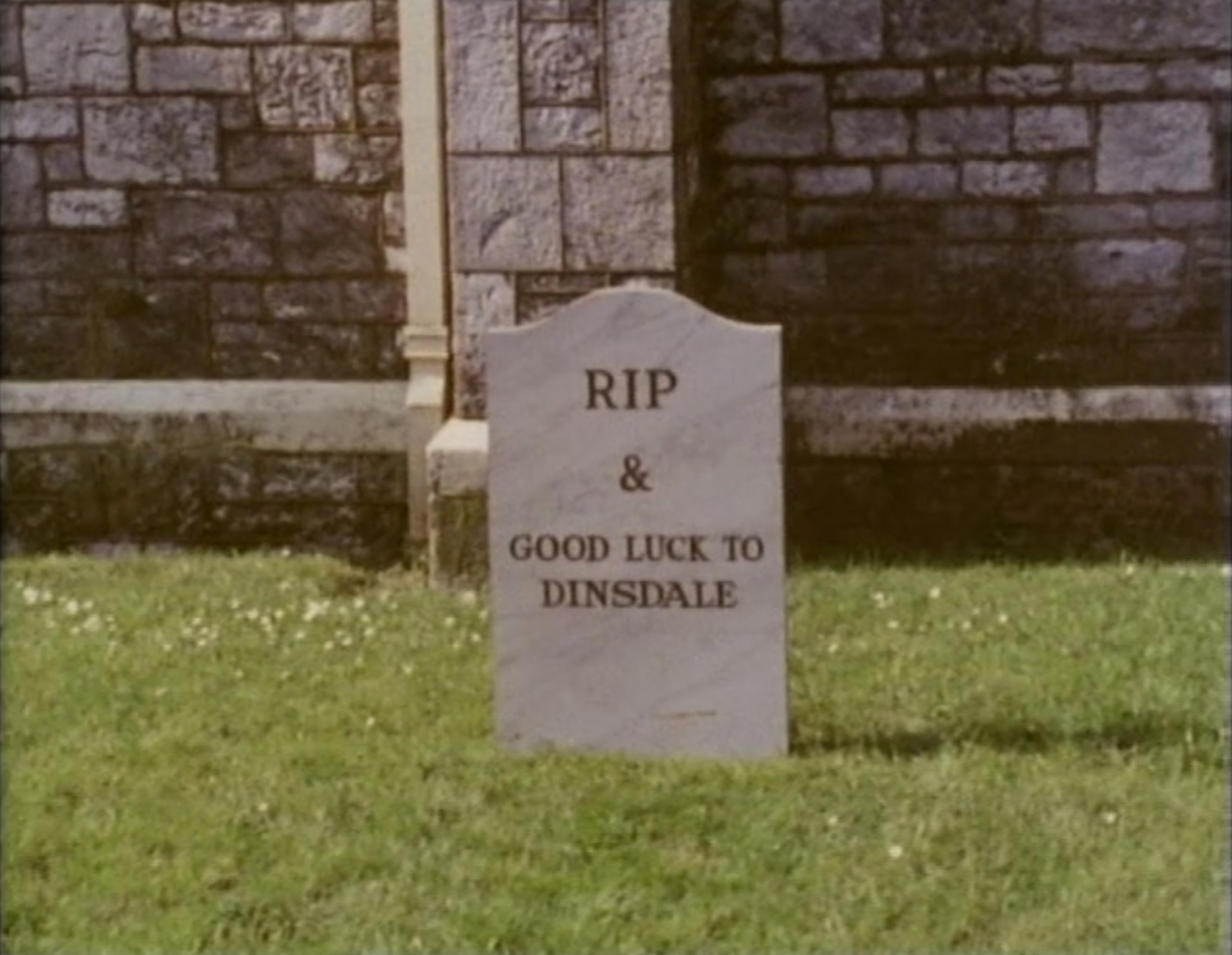
On Sunday 27 October I saw the Otomo Yoshihide Special Big Band at Cafe Oto. This 17 piece ensemble from Japan played the gamut of modern big band music, starting off with the stomping rhythm of Stone Stone Stone (I believe). One of the glories of this orchestra is that it functions as separate bands within the band, the sectional conductors calling out changes for their own ensembles. This makes for great excitement and dynamism, a feeling that each moment, each break is special. During the evening they covered nearly every known genre from French Romanticism to Northern Soul, I heard the systems music of Steve Reich for a few bars, and plenty of Sun Ra, spinning off into atonal galaxies. You never knew what was coming next, yet it was all held together, with the great joy and happiness evident within this big band.
It took me some time to appreciate big bands, they seemed too amorphous and maybe old fashioned, belonging to a previous generation. I was brought up on The Beatles, you could hear what everyone was doing, and hear exactly how they all worked in unison and why every component was vital. They had the power of amplification on their side to make even four people sound like an orchestra. However before electrification and the public address system took over, all bands had to be large, simply to make enough noise to fill the hall. So back in the 30s big bands ruled the roost and they played acoustically. That now seems admirable to me, I want to hear the musician, not the processing. So what is a big band? Basically it should contain at least 10 performers and a brass section, that is the limit of my definition. It is a very open category, the keynote being dynamic excitement.
Probably the first big band sound I loved would be the fabulous arrangements by Nelson Riddle for Frank Sinatra, without even thinking they were a big band. I got into a great deal of trouble at Sounds (a rock music weekly) for making Songs for Swinging’ Lovers (1956) the No. 3 in my Top 10 albums of all time, which meant it would have appeared in their Top 100 – I had to remove it! While that album may have been too jolly for Sounds, I wonder if my first truly memorable gig by a live big band, Sun Ra at The Venue in 1983, would have been acceptable with the album Jazz in Silhouette (1959)? I was to see the Sun Ra Arkestra at Cafe Oto many more times from 2009 to 2014, cementing my love of this music. In fact thinking back, I had bought Escalator over the Hill by Carla Bley in 1972 while still at school, yet I did not even think of this as jazz or big band at the time, more like experimental rock featuring Jack Bruce. I guess what made these records acceptable was the pulsing and dynamic rhythm section, after all big band music was originally made for dancers.
In my pantheon of great big bands there many are I have discovered over the years. You can’t go wrong with anything by Duke Ellington, and my first choice of his would be Ellington Uptown (1952) featuring A Tone Parallel to Harlem (Harlem Suite). Another great modernist composer is Stan Kenton, you can hardly believe this music was made back in the early 50s, and albums such as Innovations in Modern Music (1950) feature a 37 piece orchestra with a 14 piece string section. Following up on some of Kenton’s inventiveness there is Don Ellis who brought a swaggering 60s feel to big band music, and if that’s a bit much try Gil Evans, famous for his work with Miles Davis. A contemporary acolyte of Gil Evans, who has also worked with David Bowie, is Maria Schneider with several Grammy Awards to her name – check out Data Lords (2020).
Closer to home there is the fabulous Spanner Big Band, playing modern arrangements of 50s classics from Mingus, Ellington and Basie as well as a few reorchestrated pop tunes. They are led by the dynamic Dan Spanner and regularly play at the Three Compasses in Hornsey for free. Also recommended are Orquesta Esterlar, a community-based Cuban big band, playing monthly at The Post Bar in Tottenham, and that’s free as well. So do go along…it’s always a privilege to see a crazy big band and financially these days they are performing for the love of it. You can tell from the smiles, on your face and theirs.

Pleasant but underwhelming is all all I can say. The fact you can “see” through the goggles (if you want) is excellent, so it is easy to forget you are wearing them. The eye navigation and finger clicking worked great, as did window manipulation. Normal photos looked no better than a good hi-res monitor, still lots of oversharpening. Asked to zoom in on a still, it looked over processed and smoothed as usual, like most iPhone pics. The iPhone panoramas were nice to move around, but of course displayed classic jpeg artifacts. The 3D photos and videos looked better through the stereoscopic glasses, apart from some dodgy backgrounds. Still, you need a Vision Pro to see them properly. Apparently the 3D media were all taken on iPhone 15, so that was good. I was then encouraged to watch several Apple video promo’s. Of course they looked great, they have spent millions of dollars on them, so they should. Did they look better than normal video, no they looked like normal 4K video to me – that is high quality but with some special cinema adaptations.
Then it all went wrong. I went to my hi-res gigapixel website and you could not make a fullscreen view. Not only that, the resolution was not even HD, it was like viewing the internet in 2001, 720×480 pixels. I should say that I was able to actually navigate my panoramas, they just looked awful. Ok, so then I tried my 4K videos on Vimeo, same result. I actually cried out “appalling”. I then asked if there was download throttling. No response. I then asked if Safari didn’t work properly. No response. If this is actually how it works, Vision Pro is not ready for primetime. If it cannot play a normal 4K video, what is the point? If you can only properly view work specifically made for the Vision Pro, I would say wait a few years.
I should explain here that throughout the Vision Pro experience there is a personal Apple Specialist who monitors your actions and your views on a remote monitor. You talk with each other during the demo. Undoubtedly this person is following a script, as a result they do not appear to be able to answer actual questions. Not only that, but my Specialist was wearing a mask, which did not aid communication. (Have I got Covid, have you got Covid, either way it is unpleasant). I also spent 10 minutes wearing the device with an error message, while the Specialist disappeared, so probably not their best ever demo. However, that did give me time to take the selfie above, so thank you!
Nevertheless, I can see the appeal of this device in certain circumstances and enjoyed the experience. I did manage to use the virtual keyboard with eye navigation, a bit like using an iPhone keyboard in fact. As you might expect from goggles, by far the most impressive part of the experience was the best 3D I have ever seen. This is only version 1…hope it gets better!

Why does anyone use X formerly twitter? It is a poisonous cesspool of unregulated misinformation. This is amply demonstrated by the ludicrous and inflammatory tweet by the owner of X saying Keir Starmer was considering sending far-right rioters to “emergency detainment camps” in the Falklands. It received nearly 2 million views before being told by the Daily Telegraph it was fake news. The day before he claimed in response to the anti-immigration protests in England and Northern Ireland that “civil war is inevitable”. This man may be an interesting businessman but he knows nothing about British politics. And guess who has the most followers on X – the owner! Surely something wrong here…
But what staggers me is why our trusted commentators, the government and the BBC for example, continue to use and hence promote this broken platform. This is a classic addiction scenario – I know it does harm but I can’t help using. I suggest a detox and course of rehab. So get a grip and follow your own recommendations.
X is now trying to suing advertisers who have withdrawn from the platform. I was not aware that advertising is mandatory. X is no longer the nice global town square, but currently global riot central. Back in 2020 it was estimated that approximately 48 million accounts (15% of all accounts) were not genuine people, says Wikipedia. It seems ridiculous to me that anyone would sponsor this unregulated farrago. In fact I would regard any advertiser on X as suspect, so boycott now, please!
To put this in perspective I was amazed when twitter became so popular with our members of parliament. They had no control over this foreign medium, were surrendering copyright and participating in a shouting match. Of course it was fast, easy and universal, but numbers do not excuse their behaviour. MP’s may comment about the riots on X, but they do not seem to care or even realise they have been fomented by posts on X itself. When you use the platform, you are promoting the platform. Finally an NHS Trust has seen the light stating the platform is “no longer consistent with our Trust values”. Our government should do the same.
You only need to look at any blog to see how random the replies are. Maybe 5-10% are of any interest, at least 50% are exercising their copy and paste hobby horse, while probably 25% have not even read the article! Here I am referring here to the Guardian Comments which are highly moderated, others are even worse. Most YouTube comments are just bigging up and content free, while we all know how Amazon reviews can be bought. Comments are a world of fluff.
In 2006 my website, z360.com, was cool site of the day on Fark and received over 4 million hits. They ran a comments column which was either very nice or moronic, mostly concerning a single dog occurring in my panorama. At that moment I realised internet numbers and followers are entirely worthless and meaningless. Yes cat videos are still No.1 on YouTube, but so what and who cares?
You do not need an online safety act, just stop participating in harmful forums, you hypocrites. Stop giving them legitimacy. Despise the meaningless numbers. Just leave.
X
Update 12/08/24
MPs beginning to see the light:
Josh Simons, the Labour MP for Makerfield, said “What matters about Musk is not only what he said, but how he changed X’s algorithms. He’s turned X into a megaphone for foreign adversaries and far-right fringe groups seeking to corrupt our public sphere. Nobody should have that power.”
Update 13/11/24
Media organisations finally beginning to see the light:
The Guardian newspaper will no longer post on Elon Musk’s X from its official accounts.
This is the camera, a Minox 35 GT from 1981, that I always carried with me for several years. It was tiny, only 100mm wide and 31mm deep when closed, it weighed just 200g, yet took standard 35mm film. It felt like a spy camera, I was always ready. In those days only professionals carried a camera 24/7, you were the exception.
Today it is no longer in production since it has been well superseded by the power and ease of use of our ubiquitous phone cameras. Yes, we are all photographers now and all those photographs are free at the point of use. How times change, how quickly advanced technology becomes redundant.
In the 80s to become a photographer you had first to build a darkroom. That was the only way to process film fast enough to be of commercial use, without spending a fortune on poor quality rush processing. So it took maybe an hour to process film and then maybe a couple of hours to make prints, and that was with a film drier and a Kodak drum print drier. Remember this was just for monochrome. Every click cost money, many jobs would be completed on just 1 roll of film, that is 36 pictures on 35mm or 12 on 120 format. Nowadays I may take 500 pictures or more, there are so many more decisive moments these days! And they are all free…
The fastest film available was normally Kodak Tri-X or Ilford HP5 at 400 ASA, often push processed to 800 ASA. There was Kodak Recording film at 1250 ASA, which had an enjoyably coarse grain, but that meant it was reserved for specialist uses. I was also an early adopter of Ilford XP1 400, a chromogenic C41 35mm film with its own specialist developer. It had so little grain and such good gradation, that art directors and picture editors thought I was using medium format, so I loved it.
As for colour, I adopted transparency film, which had a fast turnaround time of 2 hours at a good E6 processor like Primary Colour. Of course the transparency, once mounted, was the final product ready for production, there were no negatives or prints. As a result the initial exposure had to be spot on, often bracketing of exposures was necessary. Alternatively you could get a clip test for the first few frames of the roll, and then order the development to be adjusted as you required. Good colour film was always slow and the best was Fuji Velvia which was only 50 ASA. Hence I often had to use a big hammerhead Metz 45 flashgun when out on location. Most transparency films above 100 ASA looked washed out, compared with Velvia or Fuji RDP 100. A particular issue for me was tungsten balanced film (3200K) for use at concerts. The only real choice was Kodak Ektachrome 320T, but I never liked it much. Otherwise there was Fuji 64T, excellent on a long exposure, using a tripod at night.
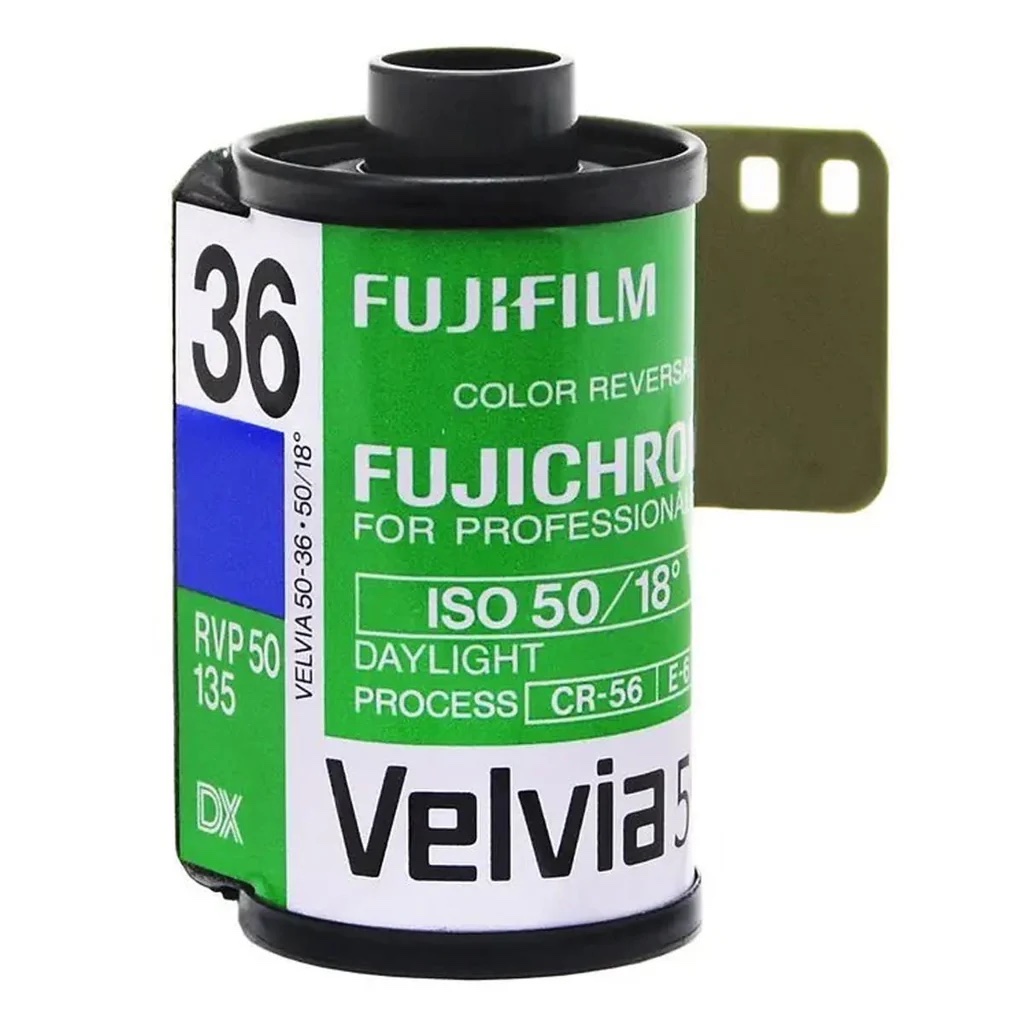
So the days of worrying about ASA, colour balance or even exposure are over. Photography sure has become easier, if not child’s play. Take a RAW format photograph and all those variables can be adjusted, no accuracy is required. The dynamic range of a good digital camera far exceeds film, an exposure 5 stops out can be recovered in Lightroom or Capture One, any colour balance may be used, and digital photos can now look great at 3200 ASA. My Minolta Flash light Meter IV is totally redundant, as are most of my photographic skills. Yes we are all photographers now…
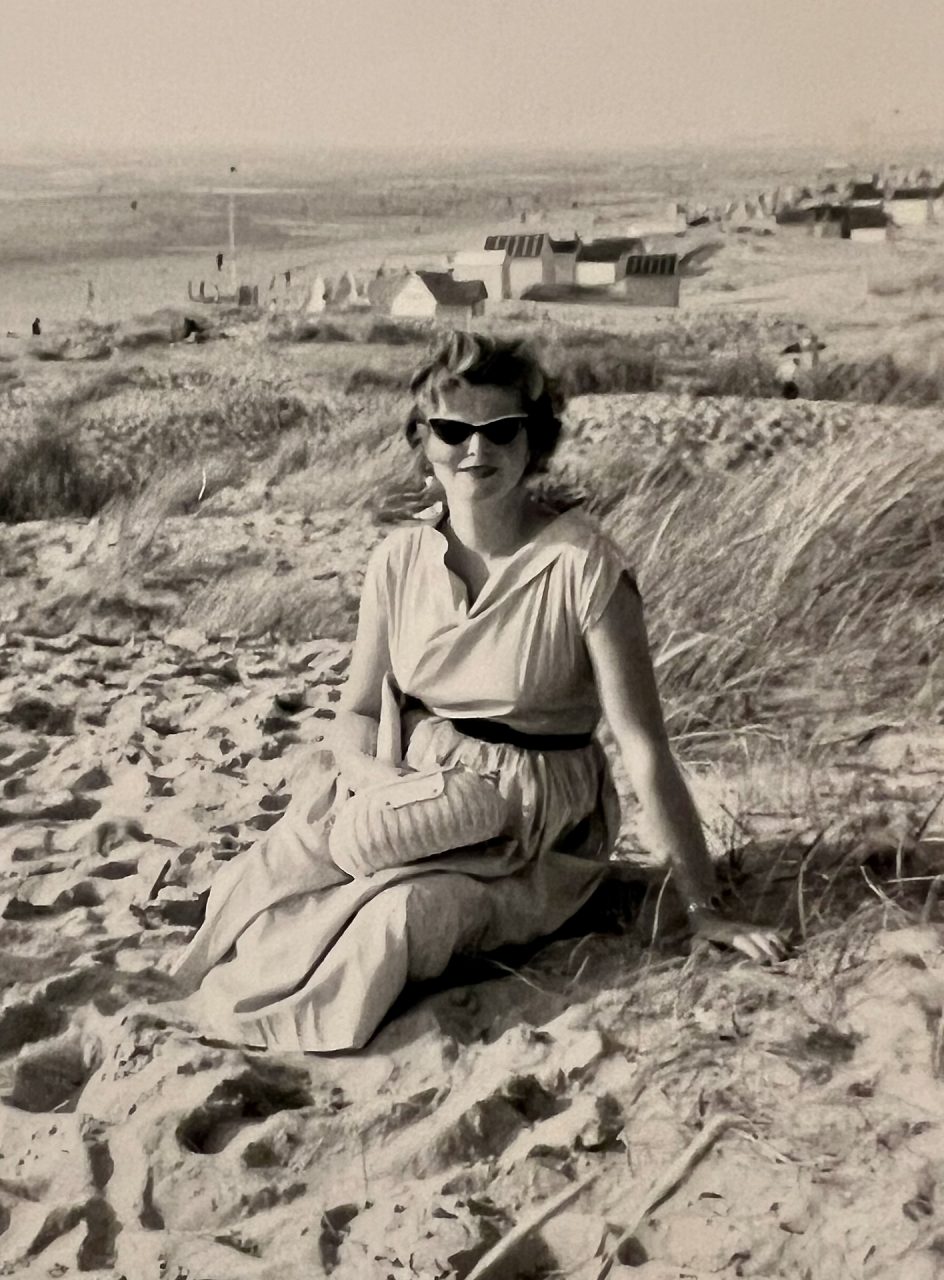
My Father and Godfather committed suicide. That was their privilege, they were Doctors. They knew they were terminally ill and they had access to the relevant drugs, and so did not need to involve a third party, which would be currently illegal. They assisted their own dying. In fact, my Father failed the first time, which shows just how difficult it can be. Don’t forget providing information, advice, support or assistance to anyone intending to take their own life is against the law. Until 1961 attempted suicide was itself a crime, leading to prison and loss of all goods.
Unfortunately, my Mother, who had made it clear through several documents such as a Living Will and DNR (do not resuscitate instructions) that she did not wish her life to be prolonged, lived through 6 months of Hell. She also had a sympathetic local doctor and had already refused further chemotherapy for breast cancer. All of this appeared to make no difference. At her lovely hospice, I was told by a tearful doctor my Mother would die within 2 weeks. Sadly my Mother survived too long and was ejected from the hospice, and had to be placed in a retirement home, which turned to be a very unpleasant experience for us all. She fervently wished for assisted dying for that 6 months. Despite trying not to eat, she lived too long for a happy ending. I blame our outdated legal system.
Thus to say I support assisted dying would be an understatement. Of course at my age I’m already worrying about my own lack of choices. Assisted Dying is a right which should belong to us all. Thank you Jonathan Dimbleby, Julian Barnes, Patrick Stewart, Jo Brand, Prue Leith and Esther Rantzen for raising the profile of Dignity in Dying.
As Prue Leith says “While I am healthy at the moment, I’d very much like to have a little lethal concoction sitting in a safe waiting for the right moment. And I’d rather it was legal.”
Update 30/11/24
Hurrah!

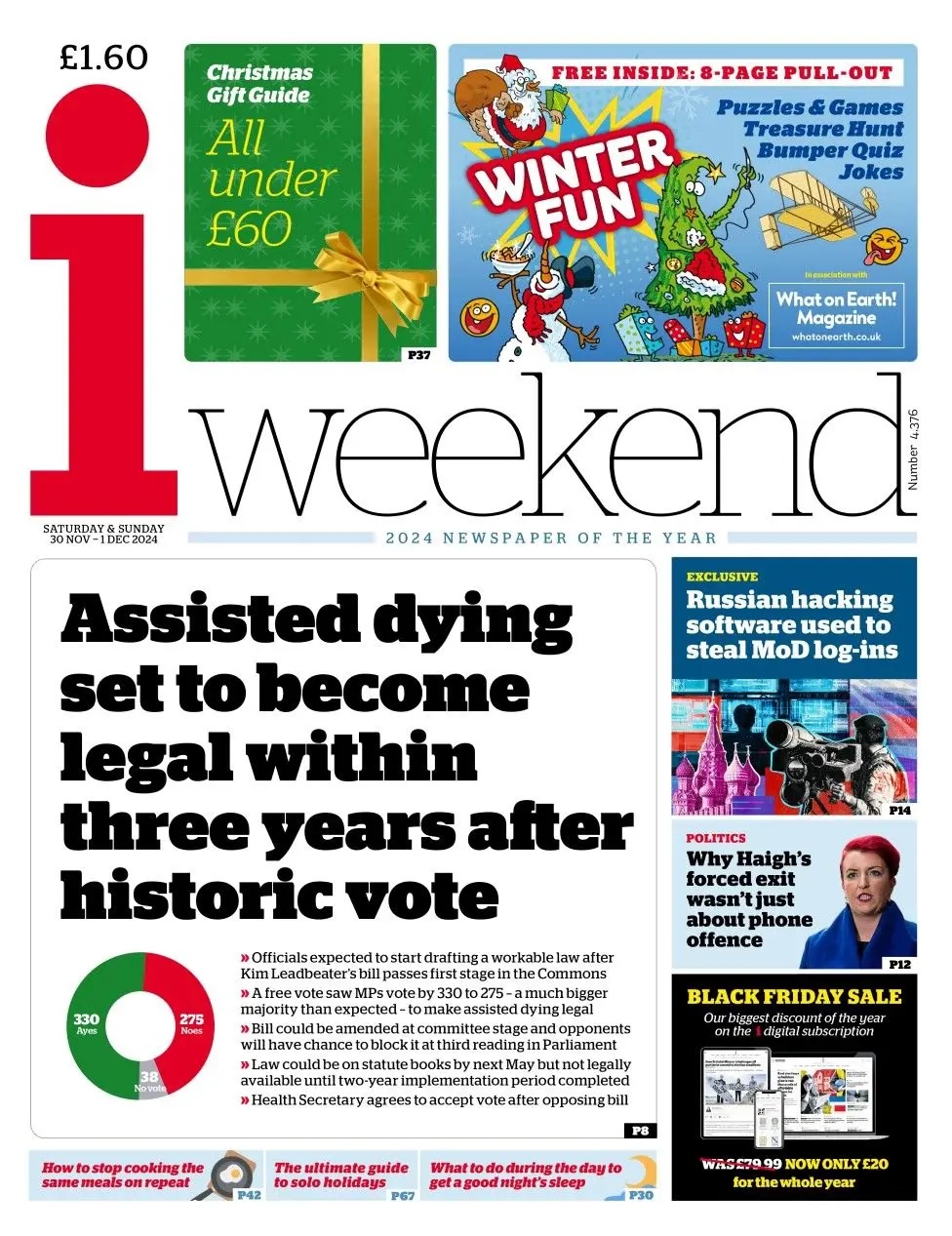
†
It is beyond my comprehension why anyone who is not a millionaire would vote for the Tories.
Still there are only 2,849,000 millionaires in the UK (4.8%), not enough to win an election.
But people still vote for them – At least for the last 14 years.
Shows how much I know…
I Saw Keir Starmer speak in 2014 before he was an MP for Holborn & St Pancras (aka Camden).
He answered every question at Camden Girls School better than anybody.
I told my hairdresser (who also held a hustings, see my video) he would be the Prime Minister one day.
I believe I will be proved right.
Personally I will be voting Independent.
The Labour Party is a War Party.
Nuclear weapons can destroy the World.
Hence I do not vote for them.
I hope that is not a surprise.
Happy Voting!
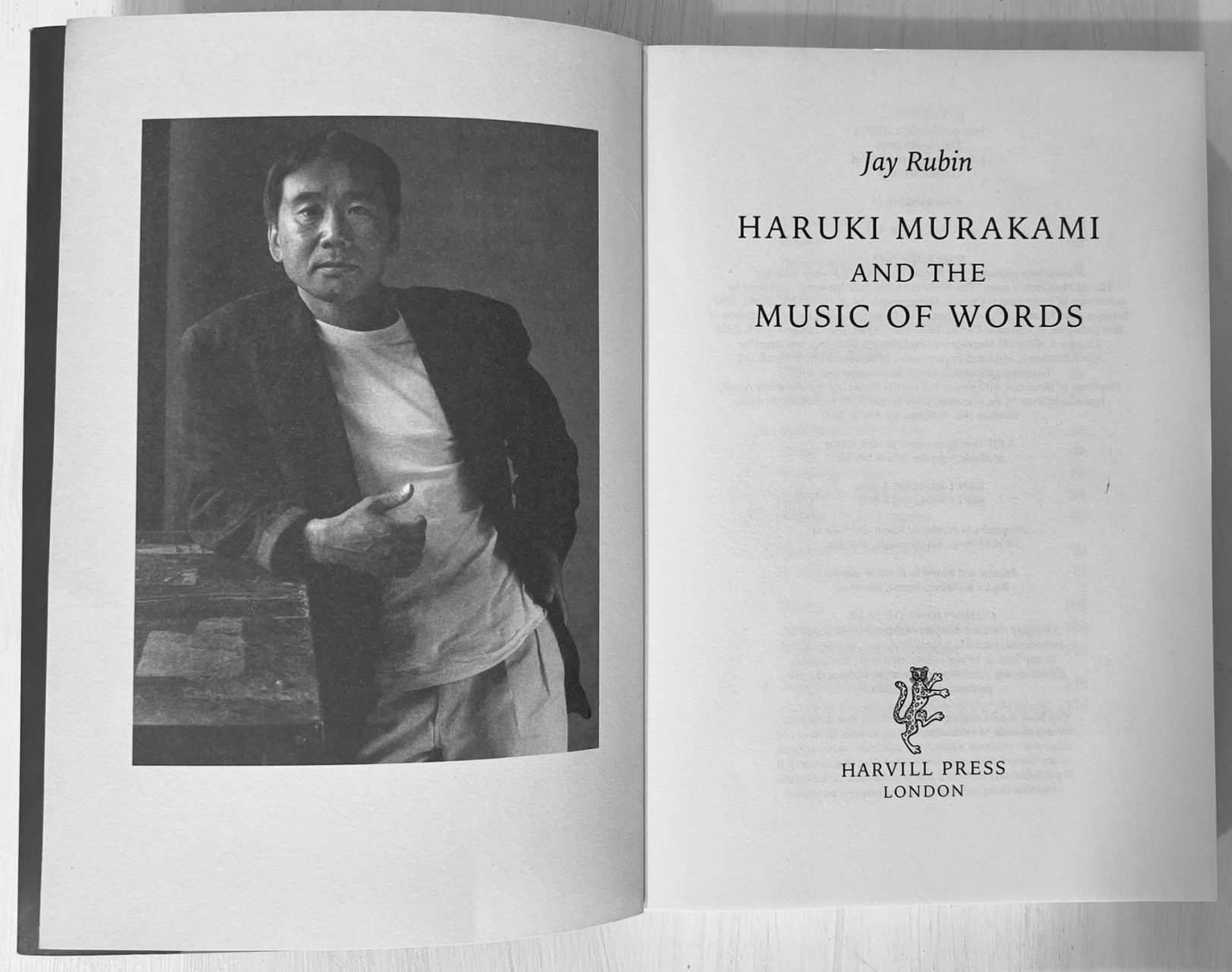
I can’t remember when I first came across Murakami, but it was some time in the early 90s, probably his 3rd novel A Wild Sheep Chase (1982). From that first reading I was hooked, entranced by his surreal imagination, the contemporary view of Japanese society and his wide ranging and accurate musical references. You could tell you were taking off on a wild careening ride, destination unknown. In fact this is the way he writes, the novel expands autonomously as he works on it, yet he nearly always manages a satisfying conclusion. As he says “writing itself is like dreaming”. To me this makes him a truly modern novelist, you don’t feel manipulated by the characters and events, the door is ajar and there is simply a sense of mutual exploration. The often bizarre characters grow organically, reacting to strange events in a totally plausible way. These are open books, there is no predestination. He manages this because his writing style is somewhat prosaic, relating them in a very down to earth way, however bizarre they might be.
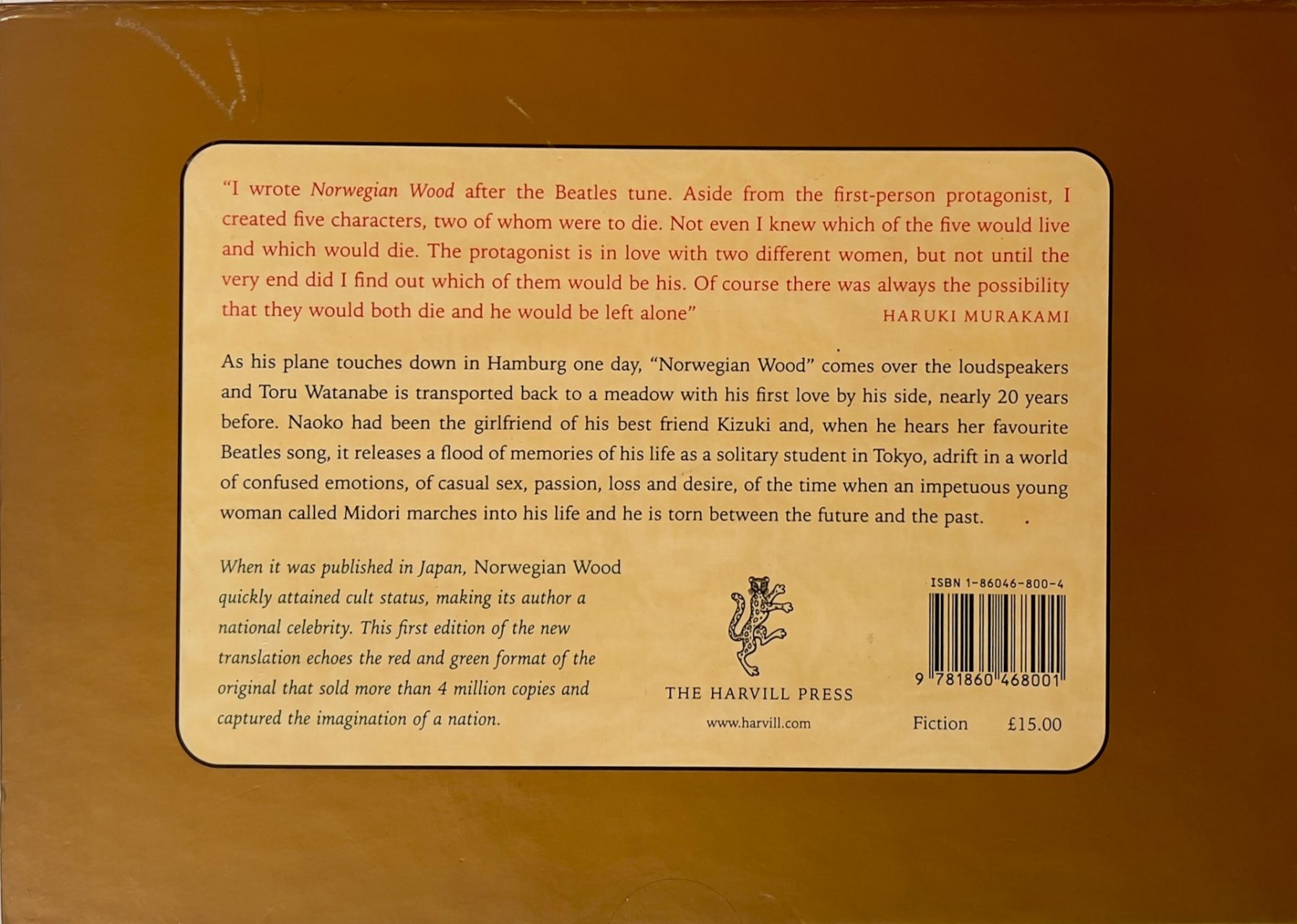
This unique style is probably down to the fact he never intended to be a novelist and certainly never trained to be one. He found his own unique voice, he explains in Novelist as a Vocation (2022) , by writing in English and then translating this back into Japanese. This gave him the simplified, pared down and highly readable style we know today. He is not in any literary tradition, which lends him an honest and personal voice. In fact the story of how he became a novelist, which he has told several times, could come straight out of one his novels. At the age of 29, he was running his own small jazz club called Peter Cat, when he went see his favourite baseball team and…
The satisfying crack when the bat met the ball resounded throughout Jingu Stadium. Scattered applause rose around me. In that instant, for no reason and on no grounds whatsoever, the thought suddenly struck me: I think I can write a novel.
I can still recall the exact sensation. It felt as if something had come fluttering down from the sky, and I had caught it cleanly in my hands.
After the match he bought writing paper and a pen and proceeded to write every night for six months, producing his first novel Hear the Wind Sing (1979).
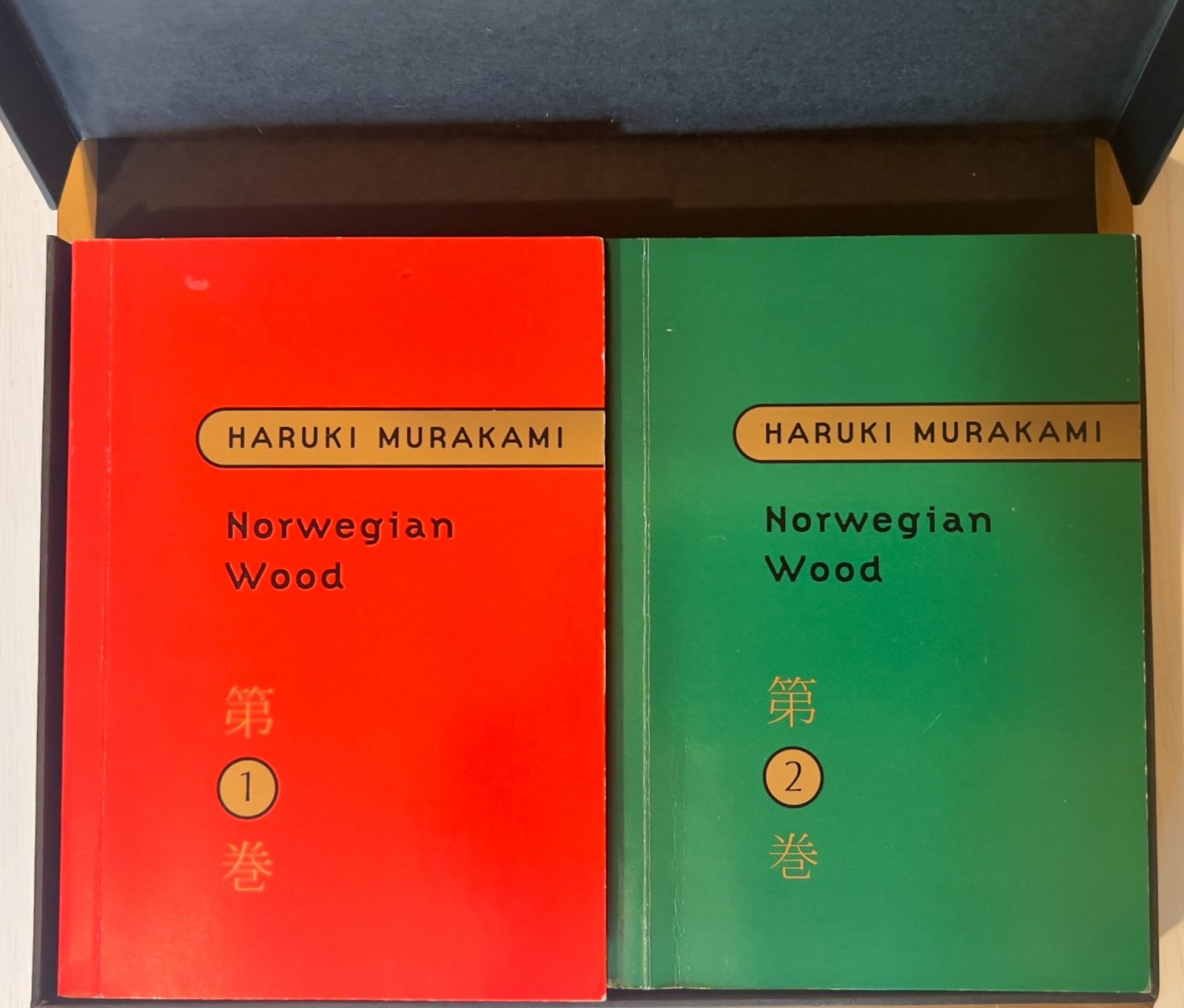
Before he became well known in the West, I always felt that Murakami readers were like a secret club. If in conversation with someone unknown and the subject of his books arose and they had read them, a mutual friendship seemed assured. A particularly bizarre experience of this nature happened in Northern Armenia. The country was suffering at the time from a complete breakdown, the Russians had left a few years previously, leading to the closure of farms, factories and even the education system. Nobody seemed to know who ran anything, people were just getting by in unregulated chaos. I was reading Hard-Boiled Wonderland and the End of the World (1985), a surreal cyberpunk novel about a crumbling walled town. There were many strange parallels between the book and the situation I found myself in and Murakami has stated that “I was so popular in the 1990s in Russia, at the time they were changing from the Soviet Union – there was big confusion, and people in confusion like my books”. Anyway to my surprise, one of our drivers (in fact from Syria) had read some Murakami, so I had leave my copy of the book with him, it seemed both appropriate and fair in the strange circumstances.
The lack of pretension combined with the acid and surreal wit in Murakami’s work, often makes me reflect on the similarity to British writers like Charles Dodgson aka Lewis Carroll, J.G. Ballard and even Brian Catling. There is an unusual symbiosis between Japan and the UK as islands at the end of continents, which perhaps leads to a unique form of isolated irrationality, as well as a secret understanding of the others situation. While his authorial voice can always be heard, his novels are quite varied, and he appears to have great fun with the design, Norwegian Wood (1987) appearing as 2 small volumes in a box, 1Q84 (2010) had a heavy black burnt look and Killing Commendatore (2017) had bullet holes on the cover. He always entertains the reader.
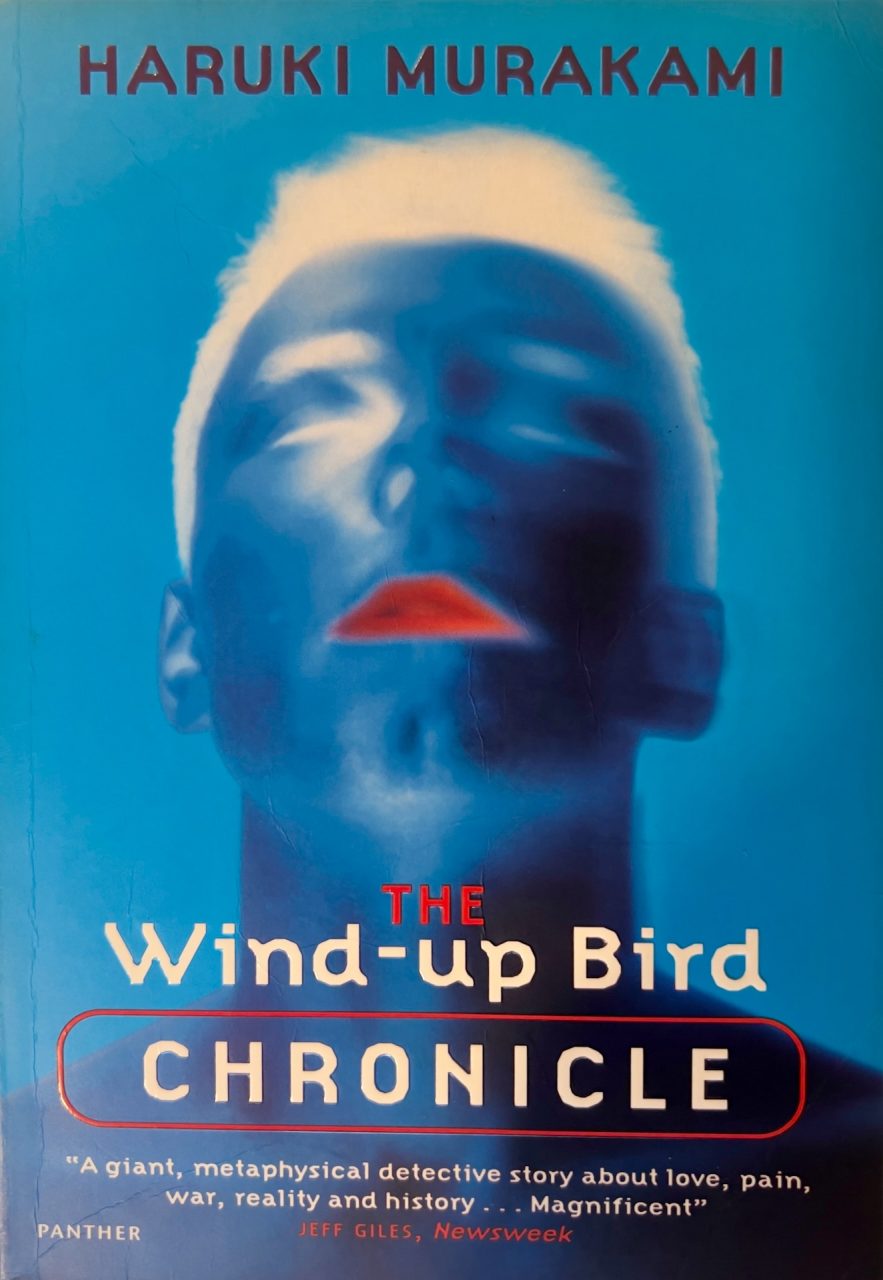
My admiration for Murakami was cemented by perhaps his greatest novel The Wind-Up Bird Chronicle (1995). If you read only one of his novels, this is the definitive one, for me at least. Shortly after this I read Haruko Murakami and the Music of Words (2002), a biography written by his translator Jay Rubin. Murakami had always been a quiet and mysterious character but this book revealed both his life story and the vast range of his output once he became an author. He writes translations of F. Scott Fitzgerald, Truman Capote, Raymond Carver as light relief from his novels, as well as a several collections of short stories, interviews and reportage. The novel Norwegian Wood (1987) which ensured his popularity in Japan and led to his living in the USA for several years, is charming, sad and maybe a little dated. Perhaps avoid 1Q84, it is huge and highly repetitive, but let me recommend nearly everything else. There are two semi autobiographical works What I Talk About When I Talk About Running (2007) and Novelist as a Vocation (2022), both of which are fascinating. All of his short story collections are highly entertaining and I thought his most recent novel Killing Commendatore (2017) to be a return to form. Looking forward to The City and Its Uncertain Walls due to published in translation later this year.
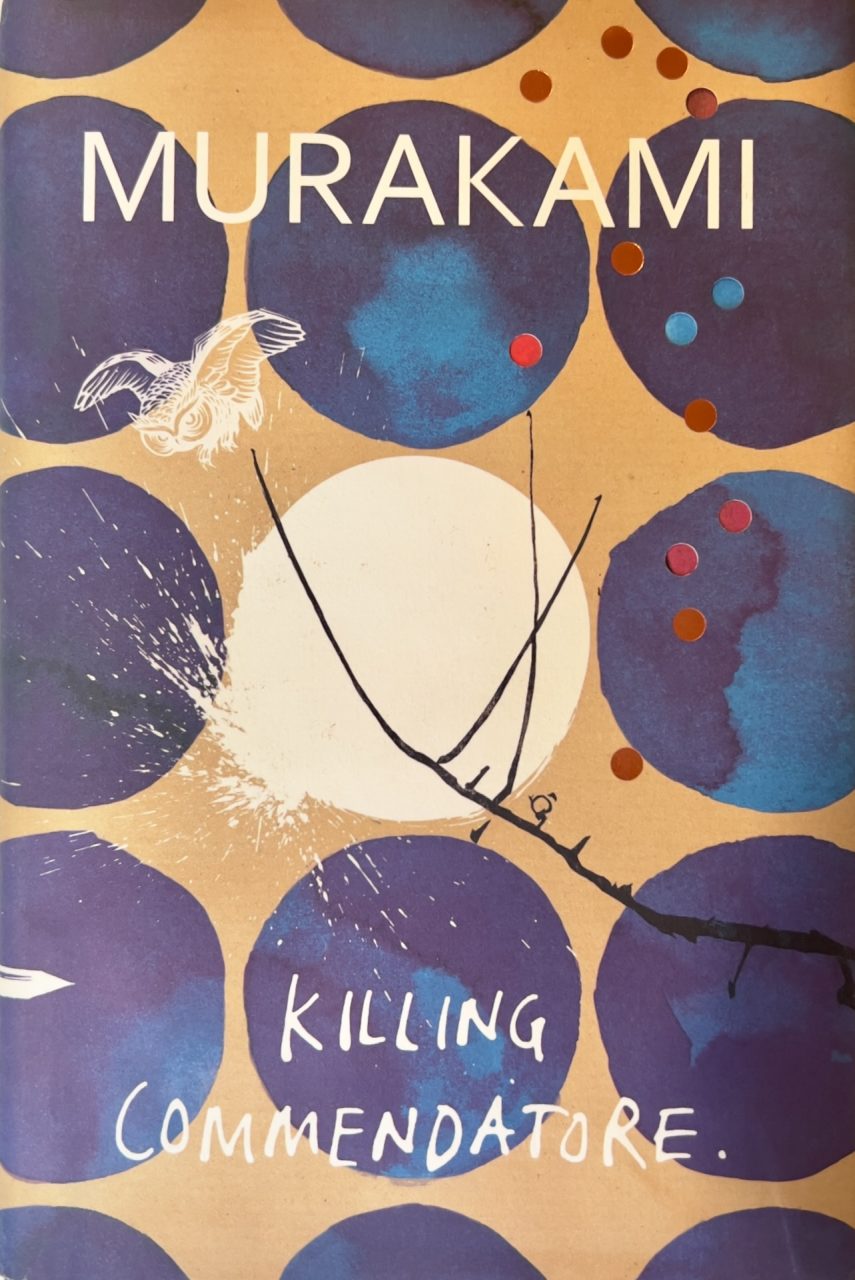
The gateless gate opens
To reveal no sound
Except the hum of life
These are our eons
Cast all around us
We are blind to them
I hear the sound of surf
Sweeping all mind away
But there is great unity
Let’s all move in time
Above the morass
We call human life
Inspired by The White Noisery (2012) by Jennifer Walshe
This poem was composed for the Musarc Winter Konsert 2023: We Are Participating.
There was a Shared Reader and Writing Project for members of the choir and this was my final input after several discussions and Zoom calls. The poem was incorporated into a psalm “The night is cold and the radio seems to be on”, which was written by members of the choir and performed with the audience.
Information about the Musarc Concert
Information about Jennifer Walshe
“Without a doubt, hers is the most original compositional voice to emerge in Ireland in the last 20 years.” Michael Dervan, The Irish Times
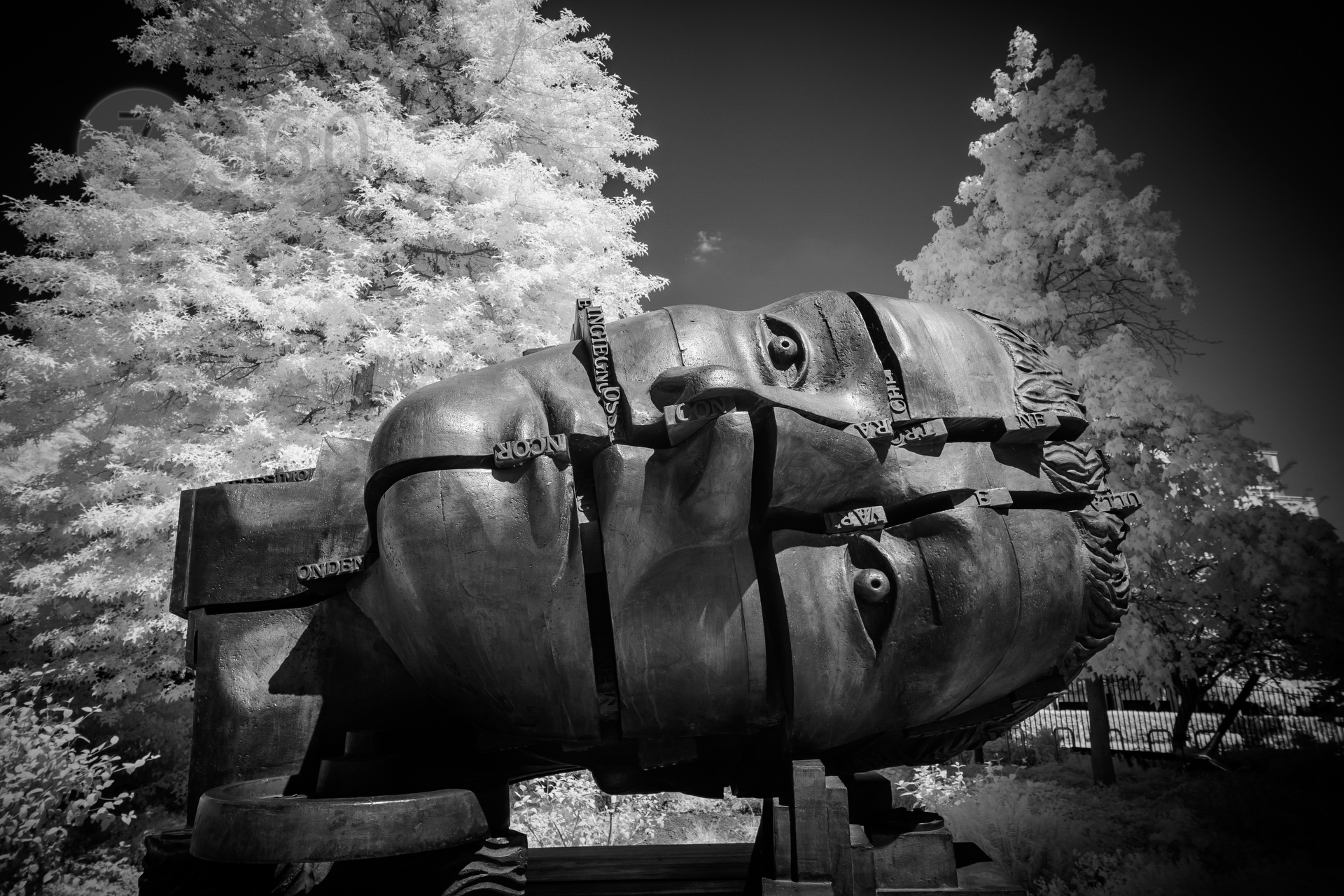
I have a bad memory. I know this because at the age of ten I had to remember the poem Froggie Went a-Courtin and repeat it to the class. This I failed to do and ended up bottom of the class at “Poetry” in my school report. Even now it takes maybe six months for me to remember people’s names, I seem to have a blank spot there. I work around it, and it requires special effort if I am forced to name someone, who may even be a good friend. However give me a hint, or even better a multiple choice question, and I will usually get the answer right. Hence I am pretty good at quizzes like Pointless or Michael McIntyre’s The Wheel. This was brought home to me when I did the first ever multiple choice O Level in Chemistry and unexpectedly got an A. My teacher was amazed and so was I, but show me the answer and I will do well.
I have maybe the best memory of anybody I know since I learnt the part of Iago in Shakespeare’s Othello, one of the longest in his whole magnificent oeuvre. I repeated this about twenty times on stage and very rarely used the prompt. I did have a method for when I got stuck, by substituting the word anything for the missing word, and nobody seemed to notice. To learn and remember all this, the role had to occupy my whole being and life, and for many months it was uppermost in my mind. At several points I thought the whole project was impossible, and I remember being on the top deck of a London bus, while trying to memorise lines, and realising I never would. Fortunately I was wrong, the mind is a bit of plastic elastic which can accommodate priorities and it is remarkably powerful. The bizarre end of this story is that I do not remember a single word of the play Othello, and would be hard put to even recognise any of those lines now.
The pain of learning lines is one of the reasons I gave up acting. Some people say they find it easy, but I never did. The role had to subsume me, take over my life and become an obsession. I found this an unpleasant trade-off. Once in a semi-pro production of Max Frisch’s The Fireraisers I was playing the lead character Mr Biedermann, and ended up comping or even inventing half the dialogue, since I hadn’t been given time to learn it all properly. Again nobody noticed, it was done with conviction! Personally I also had to revise dialogue on a daily basis if I was to remember it, and life is too short for that.
Now of course I am simply amazed I manage to remember anything, so I try not to. My mind is already full of stuff I am barely aware of or cannot access when I want, so I am trying to look after it. Does the mind ever get full I wonder, and certainly some of the rooms in this ever expanding mansion seem very distant. Yet it is a cave of treasures, constantly surprising me! This very blog is an example of random memory syndrome.
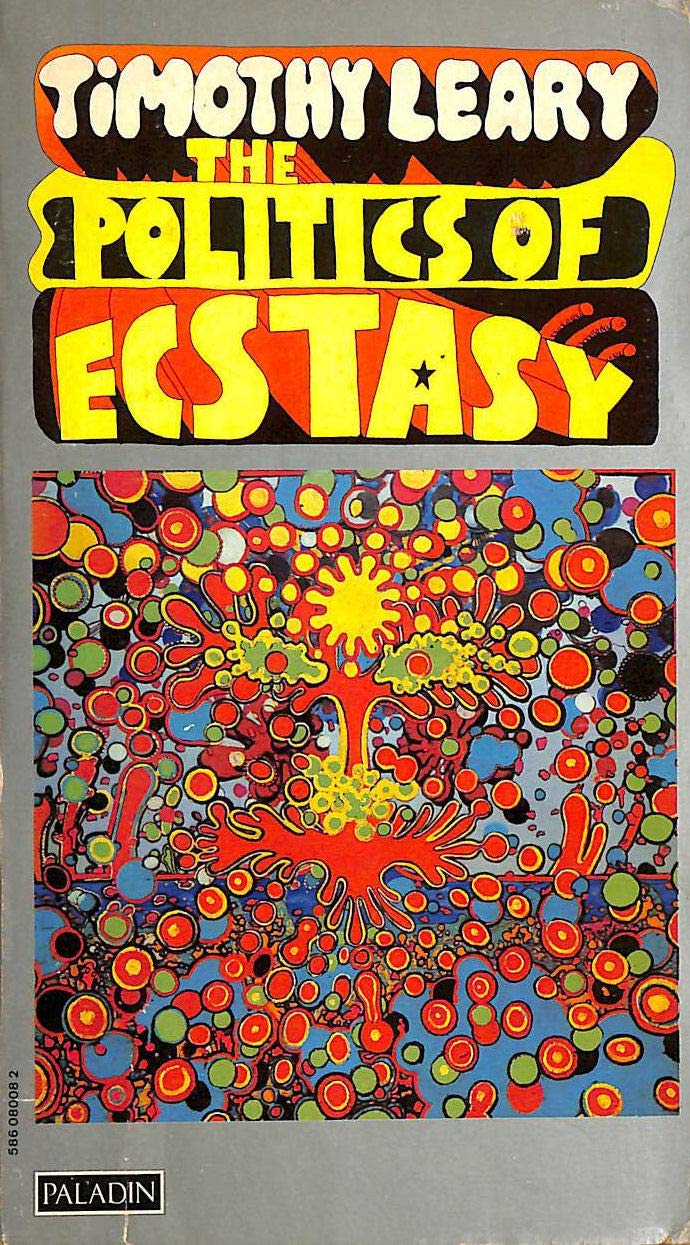
I read the book above in 1976, after I had taken LSD aka acid for the first time. It was a profound, yet relatively short lived experience. The book itself is an entertaining, if over the top read. Let’s not forget Timothy Leary was a well educated university lecturer with a Ph.D, he knew how to write, lecture and entertain. The Politics of Ecstasy was first published in 1966 in the USA and would become the foundational story of the late 60s hippie drug culture. It was first published in England in 1970, and I read it with a pinch of American salt, I already knew exaggeration when I saw it, yet it had an authority and intellectual chutzpah which was invigorating. I was already well aware of the profoundly spiritual and dangerous properties of this drug, having quizzed the few people I knew who had taken it, they had my admiration at the time. I had done my my homework, but nothing could prepare me for the reality. I believe it was on this first trip that I discovered how disorientating it could be, since I was at a concert in Pathfoot, Stirling University. Feeling spaced out, I realised I should be lying down and relaxing, so I departed early. As I was leaving through a long, large corridor I discovered I could rotate the whole corridor until I was walking on the ceiling. This was a great feeling until I start thinking too much about it and realised that this might not be a good idea since the corridor was not under my full control, it seemed to to have a mind of its own and I did not wish to fall to the floor – hey where is the floor, what is a floor, I thought gravity was supposed to exist, apparently now it does not… Most of Leary’s musings are based on The Tibetan Book of The Dead, and that should tell you before venturing any further that we are in dangerous territory. This territory was politely called a “bad trip”, yet it could destroy lives. We all knew what had happened to Syd Barrett, the former lead singer of Pink Floyd. For a good example of the foggy synaesthesia brought on by LSD, listen to his 1969 album The Madcap Laughs.
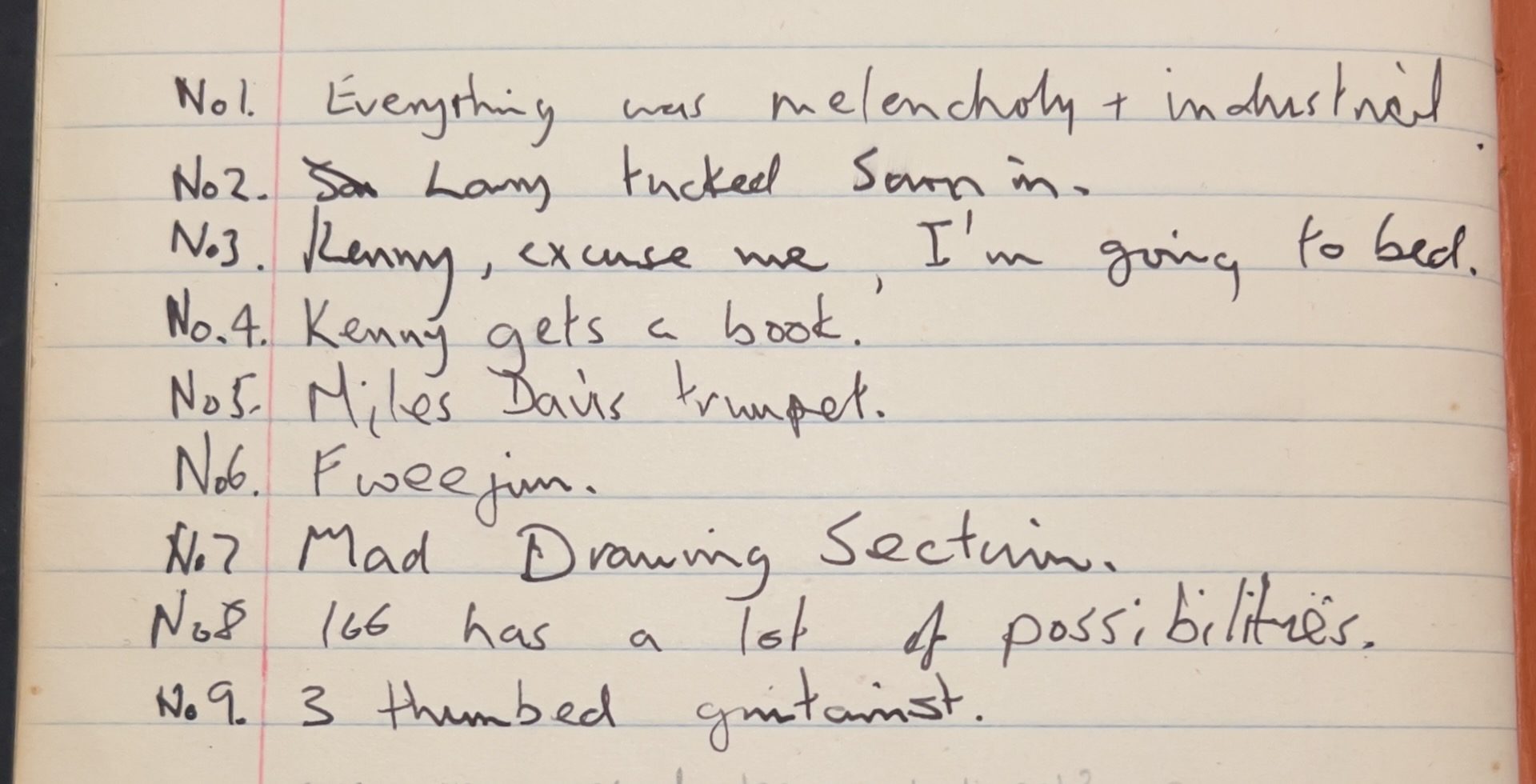
The “shit hit the fan” on my second trip a few years later, when I was back at Stirling. That night I kept notes of this profound experience, which do not make much sense now, but do provide a few pointers which I will attempt to interpret and explain:
No.1 : Everything was melancholy and industrial because we were probably listening to Escalator over the Hill by Carla Bley, not the best choice in the circumstances, but I liked it. It is also possible we were listening to Physical Graffiti by Led Zeppelin, in particularly the tracks In The Light and Kashmir. These notes begin when we had retreated to my little room and I was choosing the music. There was a lot of chaos in the next door flat (of which more later) and I had determined to have a spiritual experience by listening to cool music lying on my bed.
No.2 & 3 : These were my flatmates, also tripping – everyone was, and no doubt we were arranging ourselves in my tiny bedroom, with most people lying on the floor, finding cushions and trying to get comfortable.
No.4 : Any minor interruption seemed freighted with meaning back then.
No.5 : No doubt this was me playing the album Big Fun by Miles Davis, released in 1974, an electronic jazz album with an Eastern drone vibe, and probably the track Great Expectations which goes on for 27 minutes.
No.6 : Fweejum is a made up word that has stayed with me. I was attempting to express the noise a a large vehicle or other object makes sweeping past you, think of it as the imaginary noise that time makes when it is moving very fast, with a doppler effect. Pronounce it without enunciating the letters and you might be getting close to the sense of dropping through the floor, through time and space at great velocity.
No.7 : My flatmates were probably getting fed up with the music and had decided to use the experience to make some unconsciously inspirational art. I have no idea really, it could easily be an imagined drawing in the great dome of starscape enveloping us. Pretty sure I wasn’t physically drawing.
No.8 : Here we are in proper meaningless drug addled territory, there seem to be an infinity or maybe just 166 rabbit holes, blind alleyways or dark caves to plunge into. They multiply as you examine them and it is easy to get confused, you might choose the wrong one. At least it wasn’t 666.
No.9 : By this time I am probably listening to Go Ahead John, the third side of Big Fun and featuring the jazz rock guitarist John McLaughlin. On acid anything visualised tends to mutate and expand, yet seem real.
That was the sensible part of the evening. Beforehand an older and I thought wiser friend, also on drugs, had been violently sick. I looked on dispassionately at the fabulous technicolour mess, containing a wonderful mass of imaginary writhing creatures, just grateful I hadn’t experienced the nausea of feeling the soft organs of my body decide to leave home. Never mix drink and serious drugs I thought selfishly to myself. Meanwhile next door my fellow students were in full on LSD party drinking mode, which soon turned sour. Among our number was a garrulous French student, who spoke perfectly good English. As the evening progressed she was picked on and her every utterance became a source of great hilarity, purely due to her French accent. At an early point I had tried to intervene, to no avail, which was probably when I sloped off to my bedroom to listen to music. At dawn, many hours later, I returned, and she had been reduced to a gibbering wreck, who could no longer speak in any language, completely incoherent. She was truly in a state, yet the barbs continued and I felt powerless by this time to intervene. The behaviour of my fellow students, despite being on drugs, had been appalling. After several days she did recover the power of speech, but I believe she left Stirling and went back to France.
By this time I was trying to look after myself, sleep seemed impossible, life extended emptily, all desire had gone leaving yawning emptiness. That next day I attempted to behave normally and attended a lecture. I was beyond caring, nothing went in and it appeared nothing ever would. I had heard about flashbacks, when you regress to a drug induced stupor, and I was in fear of a slowly repeating chaos. Had I ruined my life? Would this go on forever? Of course not, after 36 hours with no sleep I was simply at my wits end and exhausted. Still it would take a good few days before I re-assembled my life, and determined to slowly clear up my mental state.

The fact that drugs were everywhere at Stirling can be clearly seen in the covers of The Student Handbook for the years 1975-1977. In addition drugs were openly traded in the Students Union, Alangrange, while the University itself hit the headlines in 1976 when a student broke his leg while “attempting to fly” from a third floor window. The young man broke his leg, and in court claimed he was high on LSD. A few months later, to my horror, there he was in our kitchen high on LSD. I did not think this was a good idea as we were on the top floor. I also vividly remember talking down a minor member of the Royal Family who had taken too many mushrooms. I was a bit annoyed since I had to buy him lunch and midday seemed to be the wrong time to take drugs. He had probably been up all night, I guess. Closer to home my flatmate, who was a big burly motor-biker from Dundee, decided to decorate his room with black bin-bags, which covered every surface – walls, floor and ceiling, and I nicknamed his room the black hole of Calcutta. What started off as a bit of fun soon descended into something more serious, he refused to leave this room and I presume he was taking lots of drugs. A form of psychosis crept in, he didn’t listen to any of us and stopped attending lectures. Suddenly he became obsessed with saving frogs. It was spring and the frogs were migrating across a road from the large lake at the centre of the University. There were literally thousands of frogs and it seemed inevitable a few would be killed on this quiet road. I was concerned enough to try and help my flatmate save some of these frogs, but I soon realised it was a pointless exercise, and that this formerly robust human being was being brought low by a serious mental illness. He disappeared at the end of term, never to return.
After promising myself that my LSD days were over, I believe I did take it once again, but it was a much milder experience, I am glad to say, and have little memory of it. I was lucky, and never did experience a bad trip, but I could easily see how that could happen if taken in the wrong circumstances and without due respect to the dangers. Later in life I did try ecstasy and MDMA briefly at festivals, pleasant but nothing compared to the mind curdling power of the acid trips mentioned above. I had lost the desire to lose control in this way, although I still knew a few people who ended up in hospital due to imbibing so called soft drugs. I certainly do not regret taking LSD, it was a remarkable lesson in the powers of the mind and how sanity can be paper thin. However, much to my disappointment, this experience was no spiritual shortcut. I did not arrive in Nirvana, but maybe discovered there are other ways to get there.
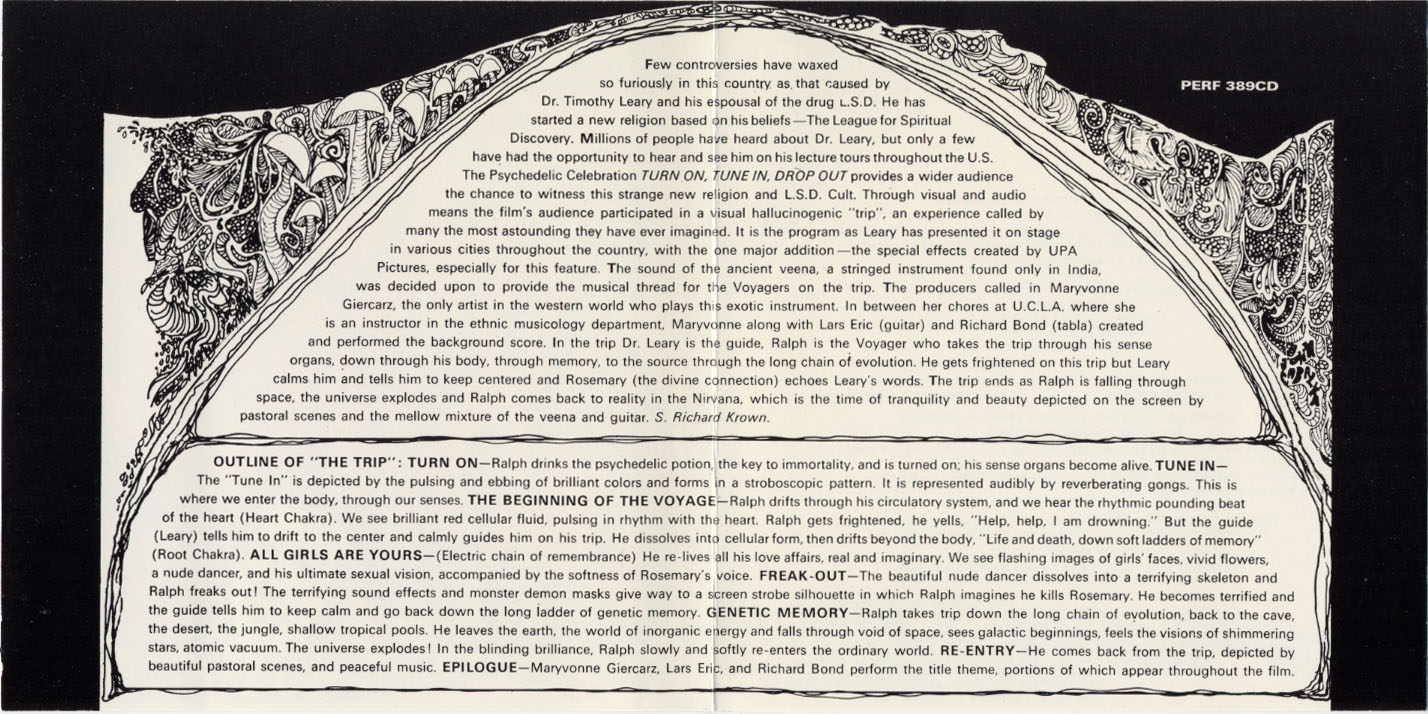
If you want to hear the real atmosphere of these times and the liturgical, obsessive nature of the promotion of LSD listen to Turn On, Tune In, Drop Out by Dr. Timothy Leary, a motion picture soundtrack album made by Mercury in 1967.
Here is a taster from a track called The Trip: Root Chakra:
“…Drift single celled in soft tissue swamp, sink gently into dark fertile marsh, drift beyond the body, float to the centre (I’m Drowning!) float beyond life and death, down soft ladders of memory.”

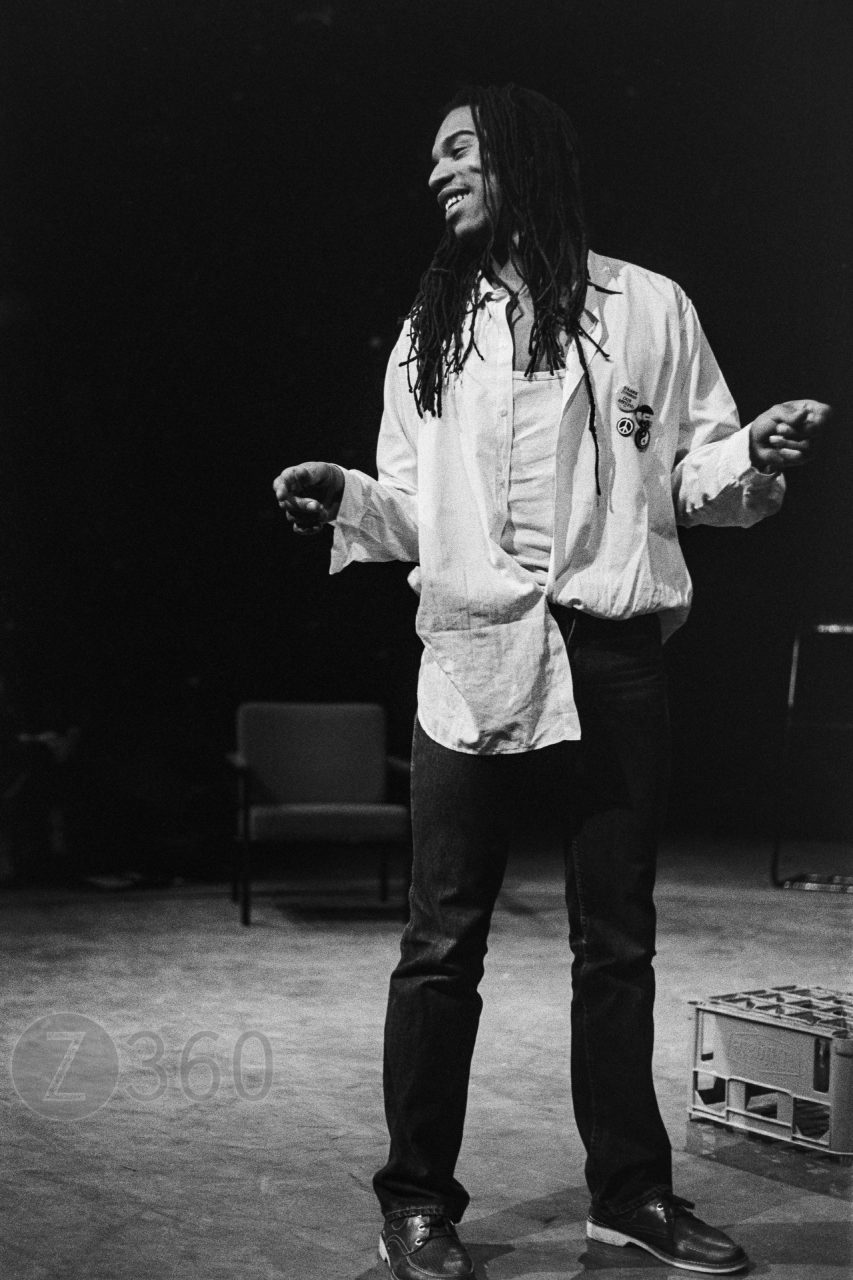
The sad and much too early death of Benjamin Zephaniah this week prompted memories of the first time I saw him way back in 1983 at the Angels of Fire Festival. I was excited to see him since I had heard about him through the New Musical Express, which was my reading matter, rather than the Poetry Review. To put this in context, Angels of Fire was a six night poetry festival featuring new performance poetry and upcoming modern poets, at the Cockpit Theatre near Marylebone. The choice of performers was certainly prescient and varied, since several of them went on to have long careers. This festival of poetry, which gave me an excellent grounding in many different voices, was shaken up by the rockin’ dub protest poetry of Benjamin, which seem like a righteous breath of fresh air at the time.
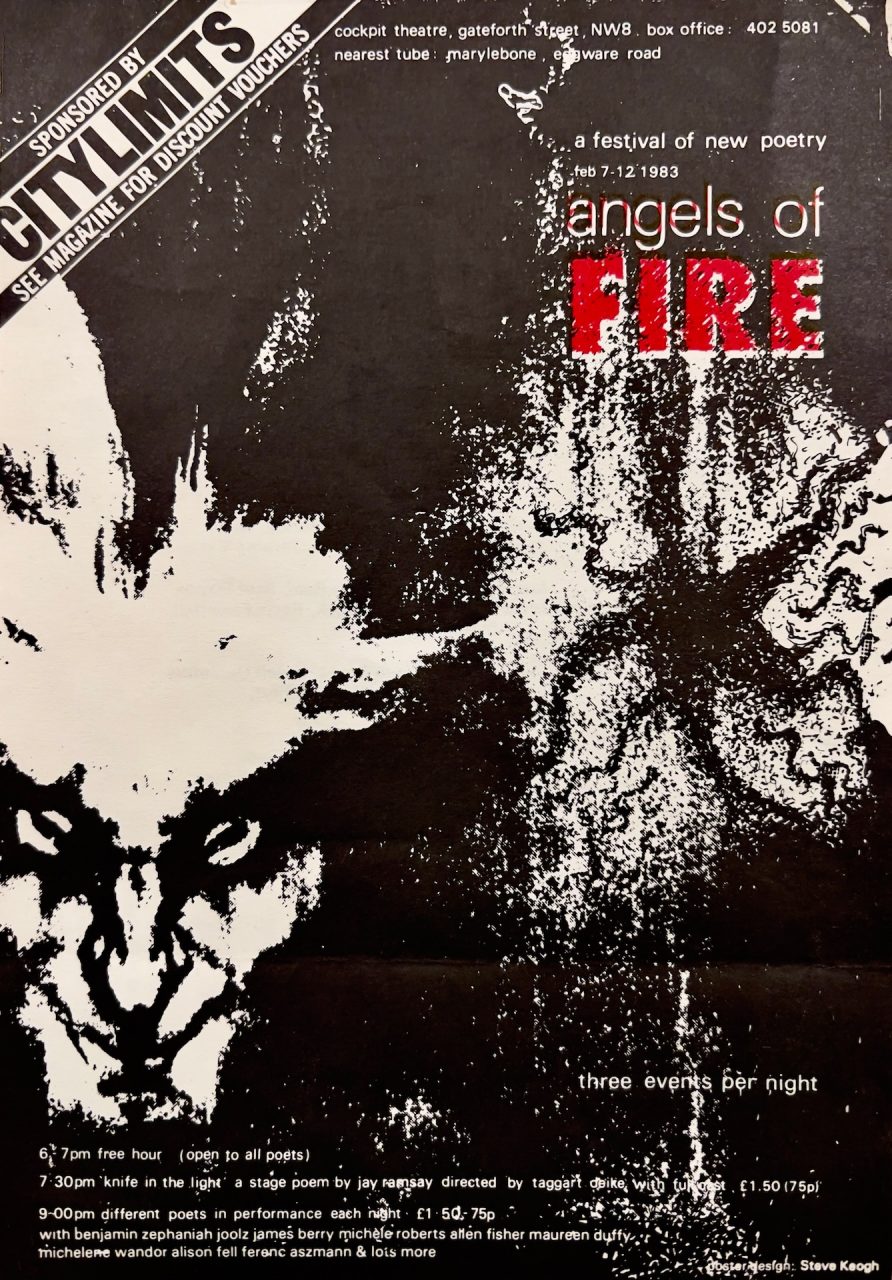
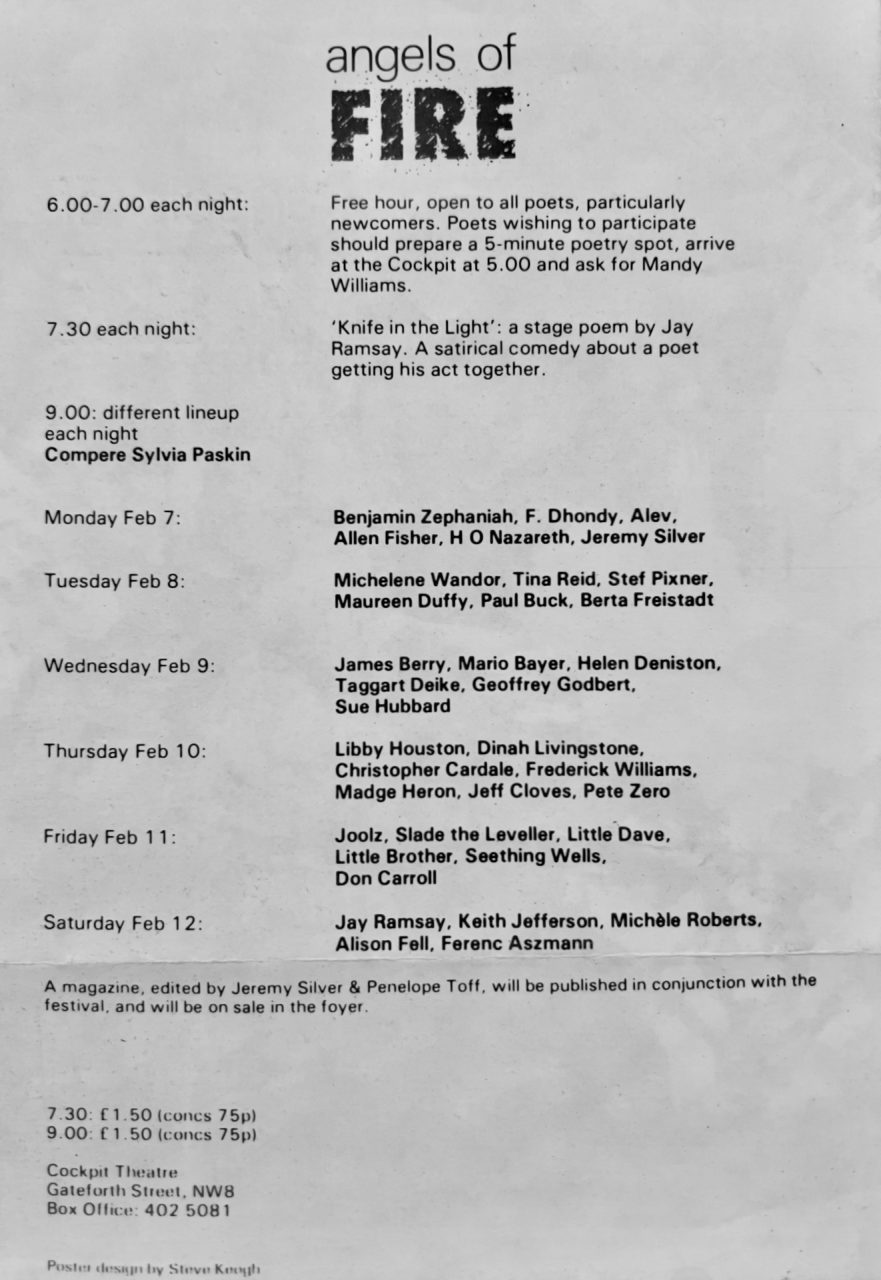
I went to every night of the festival, since I regarded it as my first documentary photography project. I did not really know what I was doing, but was allowed to take photos as a member of the audience (times have changed…). Of course I was not being paid, but I managed to wangle my way in for free for a few nights through British Library Sound Archive contacts, who were recording it. I felt at home there since I had worked at the Cockpit as a Stage Manager. Fortunately the festival was sponsored by City Limits, a London listings magazine, and I made some early print sales, with the photos being used in their poetry column. Eventually some of theses photographs were exhibited at The Drill Hall in Chenies Street WC1.
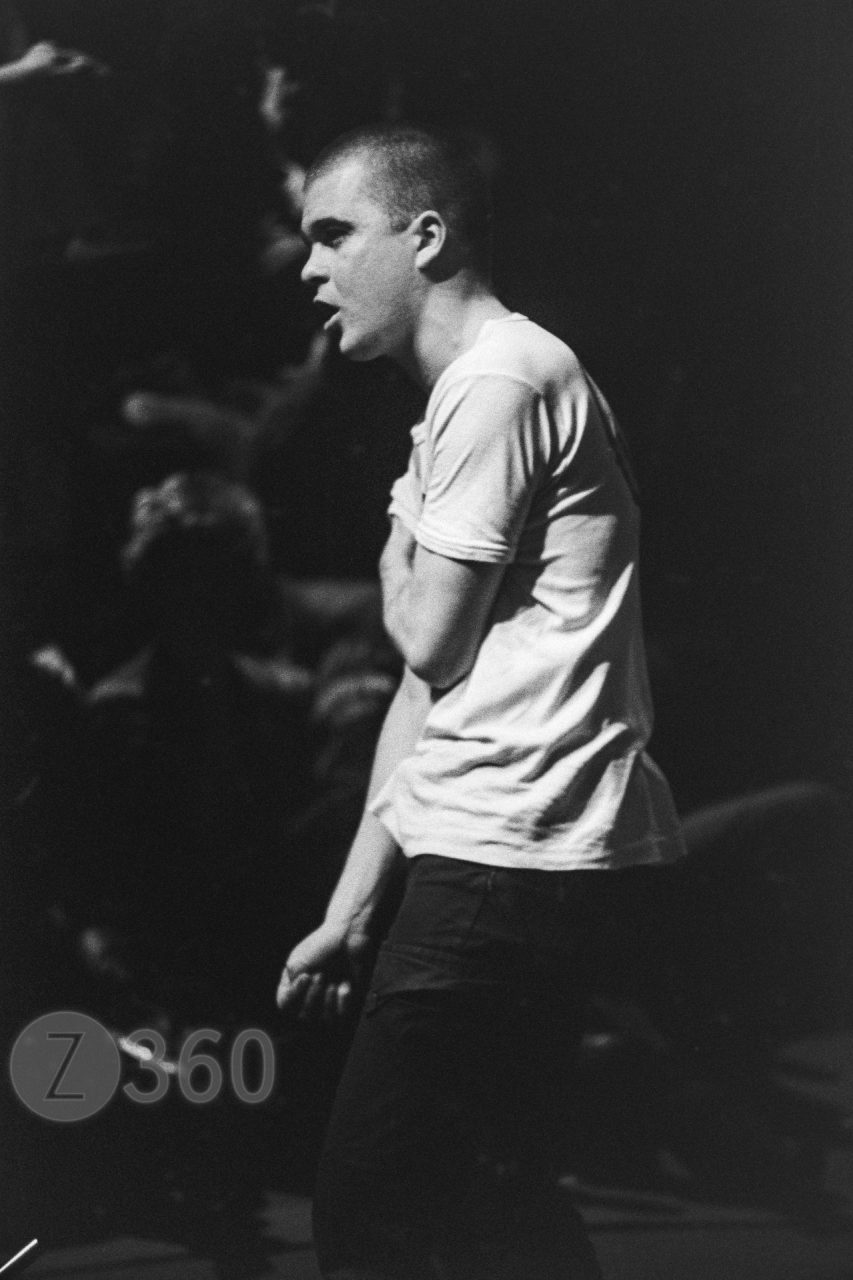
I was also looking forward to seeing Seething Wells (aka Steven Wells 1960-2009), who lived up to his moniker, along with other early ranting poets such as Little Brother and Joolz. The more refined feminist poetic tradition was also represented by Michèle Roberts and Alison Fell, while a notable contemporary wordsmith was Jeremy Reed, full of Bowie references. The world of sound poetry was not forgotten either, with the appearance of the legendary Bob Cobbing (1920-2002), later to be seen at The Klinker in Islington. Here are some of the photographs I took of these poets:
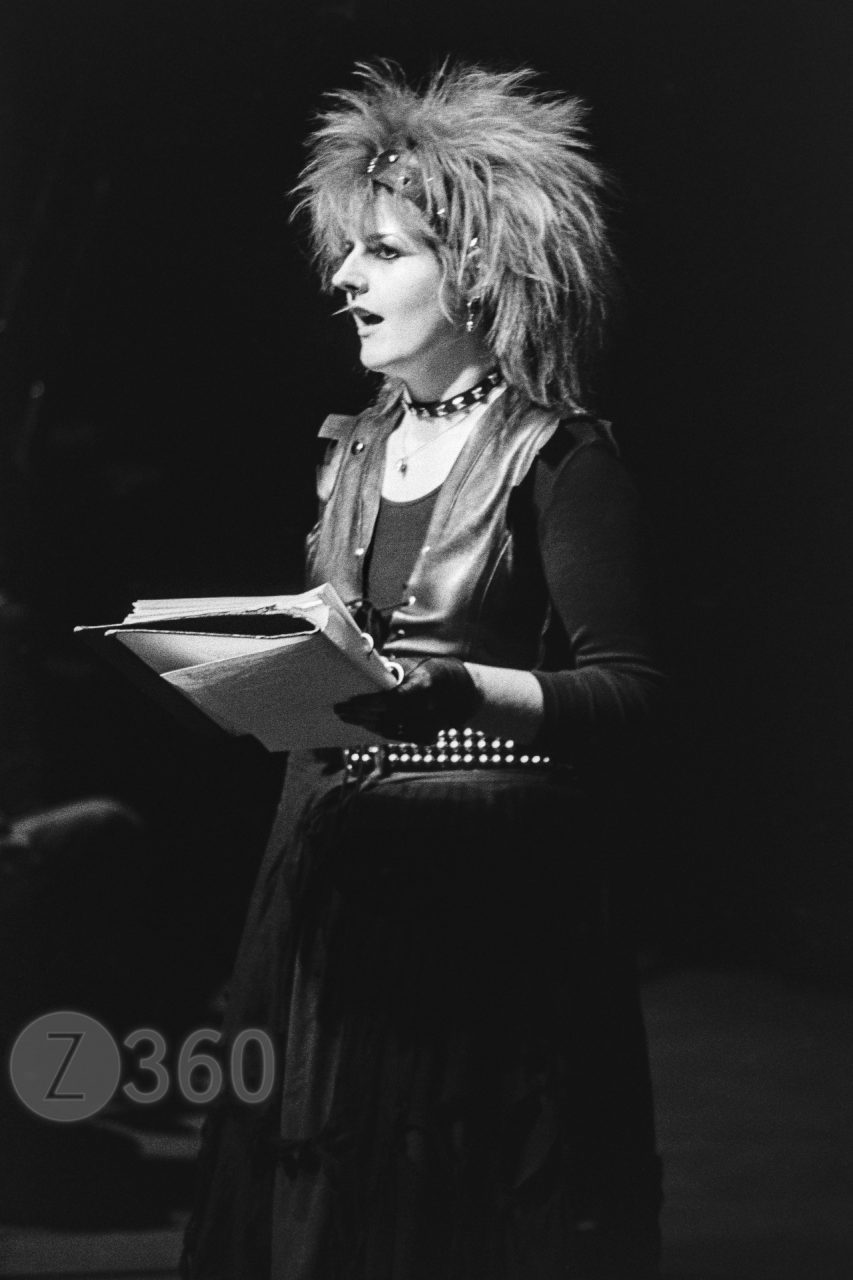
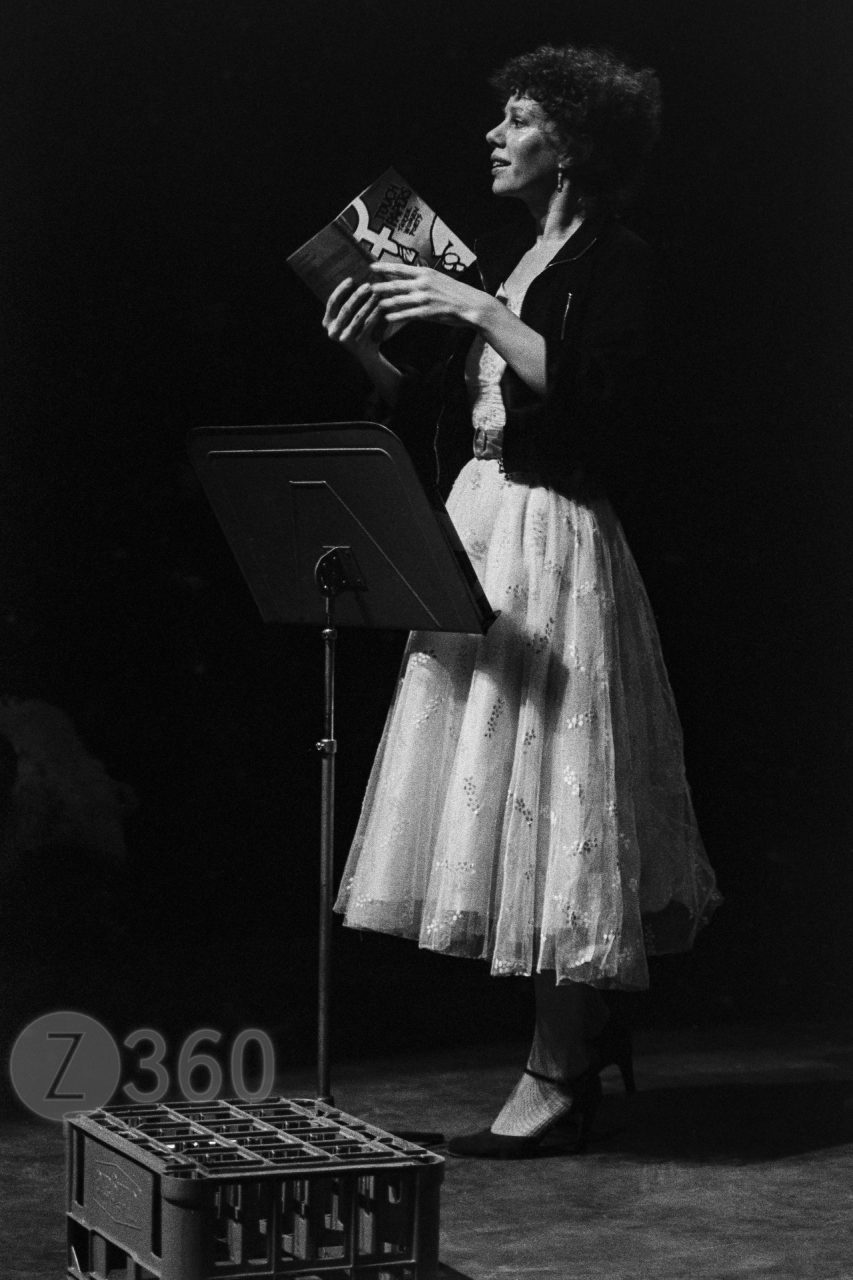

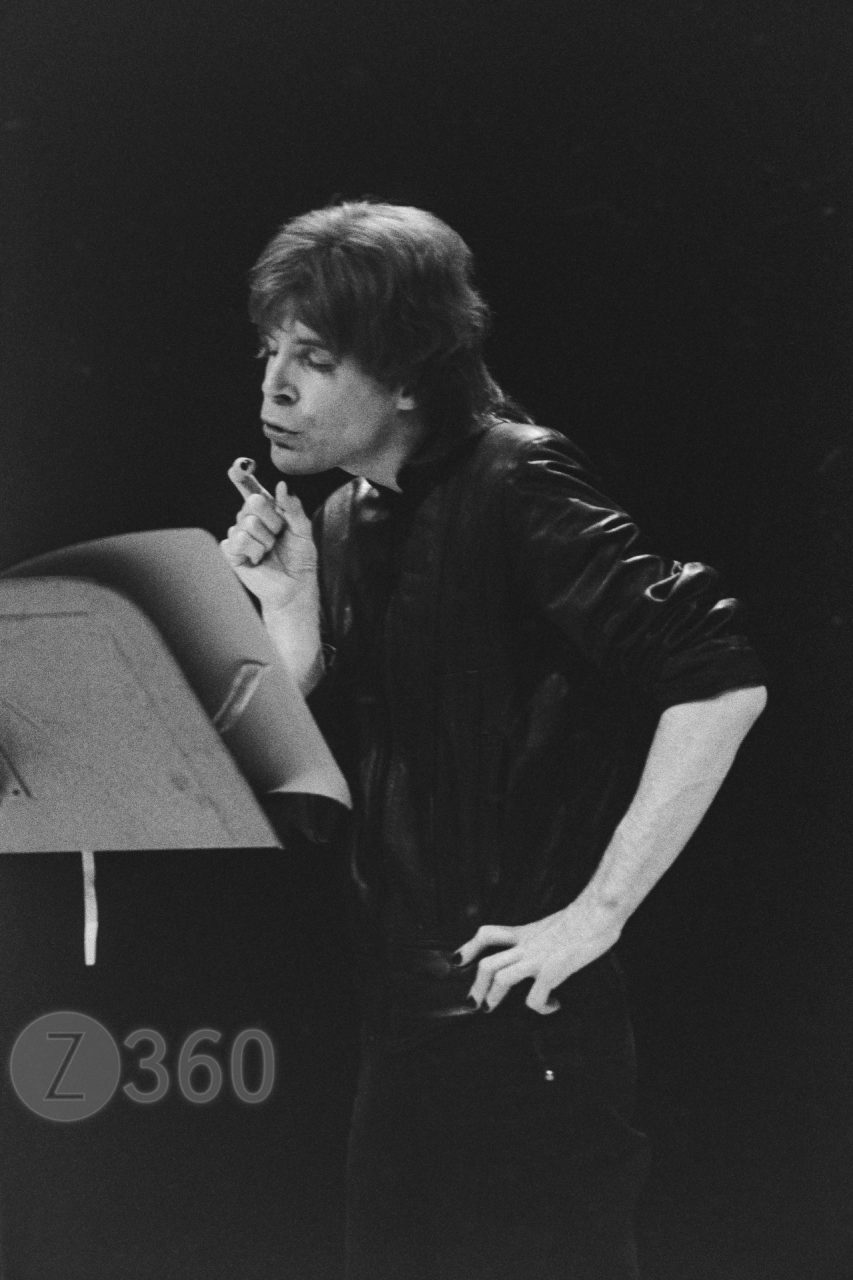
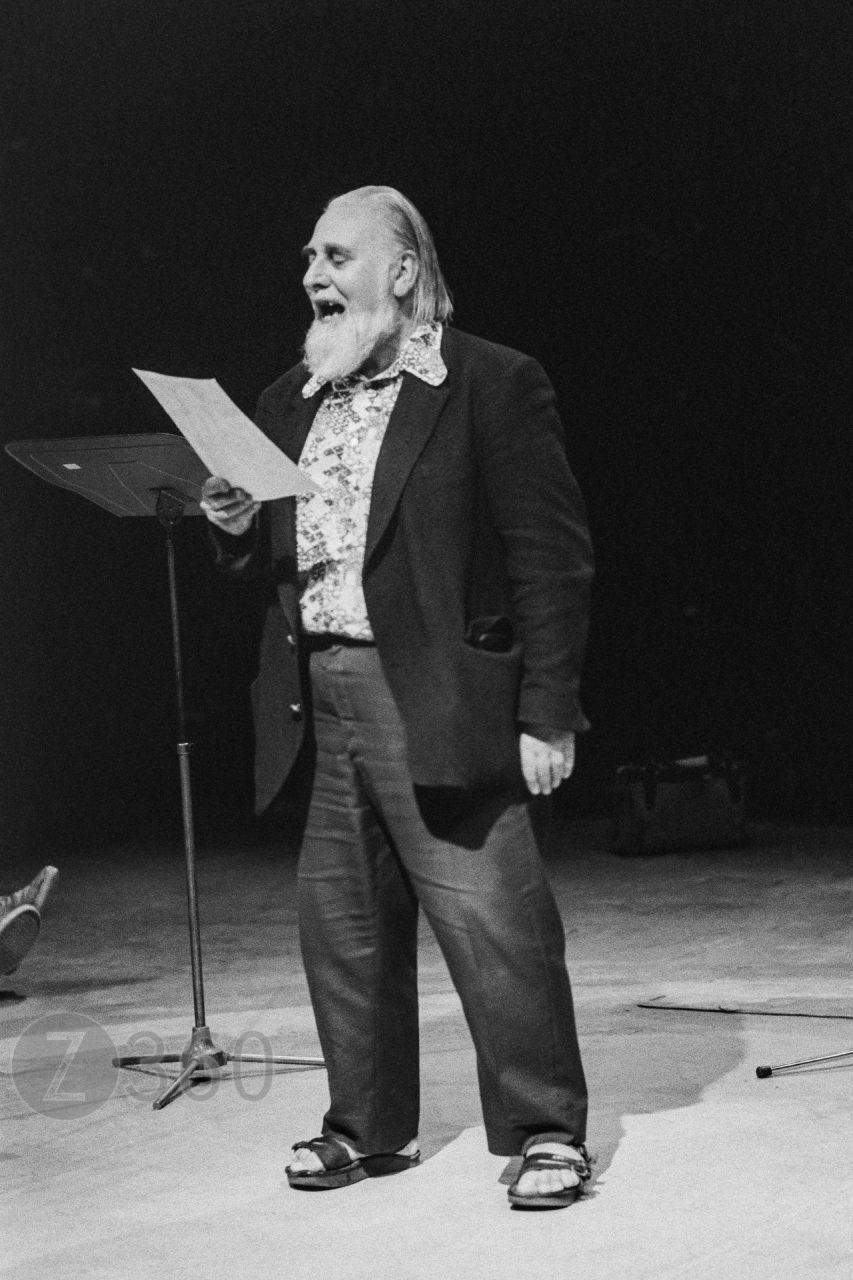
I was heartened to see Benjamin Zephaniah become become a Professor of Poetry and part of the National Curriculum, turn down his OBE, and always act with generosity, wit and humility. Here he is in full flow at the ICA a year later, I believe.
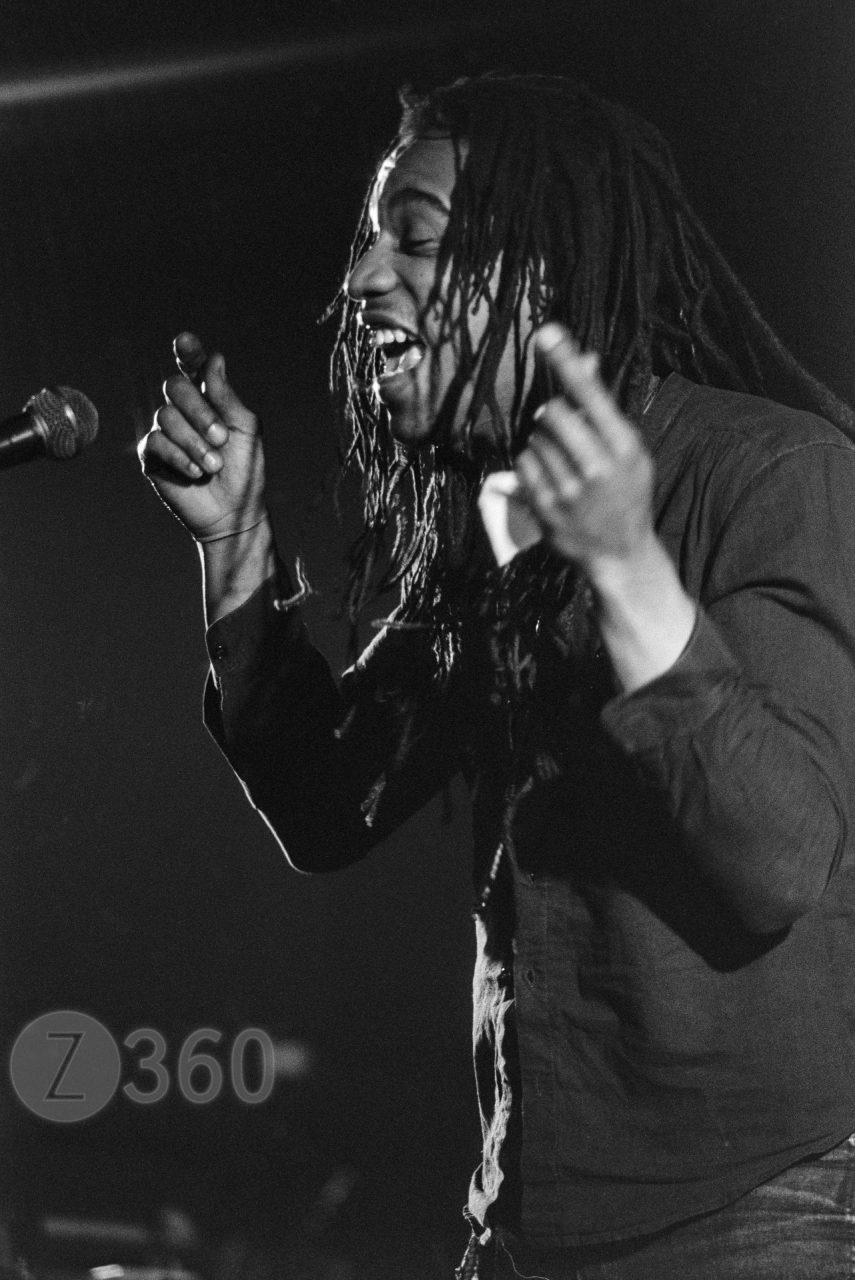
†
In 2001 I went to Gaza, as a fledgling panorama news photographer. This was not yet a valid passport to success, but with the help of Gary Knight of Newsweek, and after queuing up for many hours at a nameless bureaucratic office in Jerusalem, at the last moment I was granted permission to enter Gaza. Despite some controversy over my tripod bag, which apparently resembled a rifle holster, I walked the walk into this hell-hole at the only entry point, the Erez Crossing. Way back in 2001 this place was a war zone, as can be seen from my photographs and panoramas, I was both appalled and excited. At the time Gaza was still occupied by the Israelis, who lived in sequestered areas and bunkers, with a very heavy, but hidden military presence. Despite the fact you cannot see them, many Israeli guns will have been pointed at my head. The level of destruction throughout Gaza was staggering, even at that time. Sadly, this forlorn area has been a disaster waiting to happen for many decades. We went straight to a hotspot in Southern Gaza at Khan Yunis, a site of recent Israeli shelling and a refugee camp. Since there were still Israeli factories and residences in Gaza, the level of military intimidation was still very high. Bizarrely I saw advertisements at the time in the Israeli Press for holidays in Gaza, it certainly would not have been my first choice holiday destination, despite the long beaches.
for a larger panorama click fullscreen, or on a phone go here
After photographing the checkpoint outside Khan Yunis at Gush Qateef (built to protect an Israeli enclave), which you can see in the panoramas, we went the following day to the funeral of two young boys in Rafah (see above), killed by the bombing. Emotions ran high and as an outsider it was a genuinely scary experience on the way to the cemetery, and many guns were fired into the air. A sense of this can be seen in the video below. Following this striking experience we waited around in the hot sun to meet the Fatah Hawks. Eventually we were taken to their apartment, filled with more guns, to negotiate an interview. It was a scary situation to me, but nothing much happened, everyone was polite and we had some tea. However this was not the end of the story, since a few days later these Hawks would kidnap my photographer friend Gary and the Newsweek bureau chief, as detailed in this CNN article. No doubt these gunmen were to become members of what now would be called Hamas, who were already making a deadly play against Fatah, the Palestinian Authority who controlled Gaza. Luckily my friends were released after only one day, while if I had gone back to Gaza with Gary, I am sure I would been on the kidnap list as well. This brief event made worldwide news. After the the Israelis left Gaza in 2005, Hamas became the democratically elected rulers of Gaza in 2006. There have been no elections since.
We headed back to Gaza City, via a new housing development that had been shelled. On the way we were stopped by the Israeli army at the Kfar Darom Checkpoint, since I had illegally been taking pictures from the back of our car. Because we had good accreditation Gary managed to talk our way out of a sticky situation involving large machine guns. After these full-on days and sleepless nights we relaxed in Gaza City, I believe at the Al Deira Hotel. Wow, now I felt like a proper Newsweek journalist (it was a luxury hotel), and we even managed to wangle a bottle of wine. Of course we did have to drink it a 100 yards away from any other guests, so as not to upset them, but that was down by the beach so it was all fine. I got out safely with a real sense of relief, but as mentioned above Gary had to go back a few days later for the ill-fated interview with the Hawks. For a few moments I feared the worst. Still it was a successful trip and my panoramas were published on the foto8 photojournalism website. I was nicknamed Mr. Bean by our excellent local fixer, due to my insouciance. Taking the hint, I did eventually make the decision that artistic photography was probably a better direction for me than preying on other peoples misfortunes, there was to be no more war photojournalism. It had been an interesting experience, but was not to be repeated.
Since I left Gaza, it has been prey to a series of deadly bombings in 2008, 2009, 2012, 2014 and 2021 by Israel, while in 2007 Human Rights Watch described the Gaza Strip as an “open-air prison”. When I was there in 2001 I could already have told them that, since even then there appeared little hope for this beleaguered and isolated strip of land, home to two million people. The international community has allowed this unbearable situation to fester and should bear responsibility. Gaza, totally reliant on foreign aid, and with no control over its own water supply, electricity, airspace, coastline, imports and infrastructure, has been made into a tinderbox waiting to explode. Nevertheless that does not excuse the appalling and self-serving actions of Hamas on the 7th of October 2023. I fear more death.
The biggest catastrophe regarding the only real possibility for peace, which is the two-state solution, was the murder of the Israeli Prime Minister Yitzhak Rabin after a peace rally in 1995 by a right wing assassin, following an anti-violence rally in support of the Oslo peace process. Israel went on to vote in a general election for the side of the murderers in 1996, a vote which I have always found difficult to stomach. Wikipedia states that the new Prime Minister Netanyahu had led a mock funeral procession in 1995 featuring a coffin and hangman’s noose at an anti-Rabin rally where protesters chanted, “Death to Rabin”. A good sense of my feelings was expressed in this 2006 Panoramic Music Video, using the photographs taken in Gaza :
Update 31/0/08/24
Associated Press August 15, 2024 – Reported Total deaths:
Palestinians killed in Gaza: at least 40,005
People killed in Israel: about 1,200
Palestinians killed in the West Bank: 623
People killed in Lebanon: around 530

Update 05/12/24
Israel’s war in Gaza amounts to genocide, Amnesty International report finds
Israel had “brazenly, continuously and with total impunity … unleashed hell” on the strip’s 2.3 million population, noting that the “atrocity crimes” against Israelis by Hamas on 7 October 2023, which triggered the war, “do not justify genocide”.
Update 10/05/25
Finally the former EU foreign policy chief Josep Borrell spoke out – someone had to:
“We’re facing the largest ethnic cleansing operation since the end of the second world war in order to create a splendid holiday destination once all the millions of tonnes of rubble have been cleared from Gaza and the Palestinians have died or gone away.”
“Three times more explosive power has been dropped on Gaza than was used in the Hiroshima bomb,” he said. “And for months now, nothing has been getting into Gaza. Nothing: no water, no food, no electricity, no fuel, no medical services. That’s what [Benjamin] Netanyau’s ministers have said and it’s what they’ve done.”
He added: “We all know what’s going on there, and we’ve all heard the objectives stated by Netanyau’s ministers, which are clear declarations of genocidal intent. Seldom have I heard the leader of a state so clearly outline a plan that fits the legal definition of genocide.”
and Thank You UN Emergency Relief Coordinator Tom Fletcher.
Update 21/08/25
Pope Leo XIV has condemned the “barbarity” of the war in Gaza and the “indiscriminate use of force” as Gaza’s health ministry said at least 73 Palestinians had been killed queueing for food.
“This act, unfortunately, adds to the ongoing military attacks against the civilian population and places of worship in Gaza,” the pope said on Sunday.
“I appeal to the international community to observe humanitarian law and respect the obligation to protect civilians, as well as the prohibition of collective punishment, the indiscriminate use of force, and the forced displacement of populations.”
Meanwhile in the UK over 100 peaceful protestors against the war were arrested under “terrorist” legislation over this weekend. Maybe the Pope will be next…
The death toll of Palestinians currently stands at 58,895.
Update 07/09/25
Nearly 900 people arrested on 6th of September outside Parliament
Update 16/09/25
A United Nations commission of inquiry says Israel has committed genocide against Palestinians in Gaza.
†
Bikes have been going up in price and it is a confusing market. Decide how much you wish to spend and even more importantly what you will use it for. This blog is aimed at the non-specialist sport and hybrid rider, like me. I would say a good new bike will now cost a minimum of £600 and you can easily spend double that. I recommend a new bike for a variety of reasons, but most importantly because everything works and will continue to do so for several years. Unless you do your own repairs, fixing problems on your bike can easily cost over £100, plus parts. Soon your bargain will be costing you money, because parts on old bicycles do wear out and need replacement. In addition when you buy a new bike you can select one from the vast range out there that is designed to suit you and your specific needs. The other problem is of course, if you buy a second hand bike, there is a high probability it has been stolen from someone else and can be reclaimed. Nevertheless, buying an old rusty bike with a good frame and renewing the chain, brake pads, wheels and tyres yourself can be a very satisfying experience, although after upgrades will still cost you £400 at the very least.
Your first decision should be determined by drop handlebars – or not. If you like riding fast you will want them, and it also determines the bike geometry. Personally I like them, but I only really use the drops when going downhill fast. At my age I also need a riser in the stem on many sports bikes (see above). If the saddle is more than a few inches above the handlebars I soon start to feel uncomfortable. Nevertheless, ensure the saddle is high enough for full leg extension. Straight handlebars, found on hybrid bikes, can make a bike feel more stable, but I find most of them too wide for urban use, so I cut them down to about 56cm. Think carefully whether you need mudguards (I certainly don’t), a pannier (I prefer a backpack) or suspension – it’s only really useful for off-roading. Most so-called comfort saddles are far too wide for me, find one that suits you and is reasonable. At the other extreme, cleats and clip-in shoes are an annoyance in town, but may be useful over long distances. As for tyres, 28mm is good for sports and up to 35mm for a hybrid is fine, after that rolling resistance will escalate. My favourite brand is Continental, especially the Grand Prix 4-Season, never had a puncture!
On to some specific examples and recommendations. Firstly try to buy a bike in the January / February sales, they are often 20-30% cheaper. Also look out for last years model, it should be much better value and just as good as the full price one. If you are confident with a spanner and an allen key it is now much cheaper to buy a mail order bike in many cases. Why do I say you need to spend £500-£600? Because if you spend this much nearly all the parts will be of good, long lasting quality. Bike manufacturers tend to hide poor components, it may seem well specified, but somewhere corners will have been cut to reduce costs. I myself was prey to this when an unbranded crank on a nice bike from Genesis (a reputable brand itself) simply snapped. I should say it was replaced, under guarantee, with a Shimano one. Yes, some brands are better than others!
We all have favourite brands and these are some of mine: Ribble, Ridgeback and Boardman. My recommendation for a bargain sports bike would be a Boardman SLR 8.9 Carbon, retailing at £1200. It does not have disk brakes, but does have a super light carbon frame and Shimano 105 gears. Mine was stolen, but luckily it was insured with Yellow Jersey. With disc brakes this bike costs another £550 – still good value! Once you are over the £2000 mark you are entering specialised territory, paying a premium for small improvements. Carbon frame bikes weigh about 9kg, you can lift them with one finger. An aluminium frame will weigh a few kilograms more and a steel / alloy frame is heavier still, just don’t buy anything over 20kg. Think carefully about weight, not only because a lighter bike is friendlier to cycle, but you often have to carry them, upstairs or onto trains, for example. Many commuters choose a light folding bicycle like a Brompton (c.£1000) with small wheels, which I enjoy riding over short distances. Just remember those small wheels are more dangerous on our potholed roads, as a good friend of mine and his broken arm can attest. Boardman also produce a great hybrid town bike, the HYB 8.6, which fits my cost profile at £600 and does have disc brakes – great value. Or check out the URB 8.6, the three gears may be enough for town usage. My favourite bike company is Ribble, since they allow you to customise your bike. Their bikes are generally better specified than Boardman, and as a result a bit more expensive. However you can choose your own tyres, stem and crank length, as well as many fancy colour schemes. I bought a carbon framed Ribble R872 with Shimano 105 gears and Mavic wheels for £1400, weighing only 8.5kg. A delight to ride, it now retails around £2000 with disc brakes. Ridgeback sell a range of reliable commuting bikes starting at £550, but there are many more good bike companies, like Cannondale, Specialised, Trek and Giant.
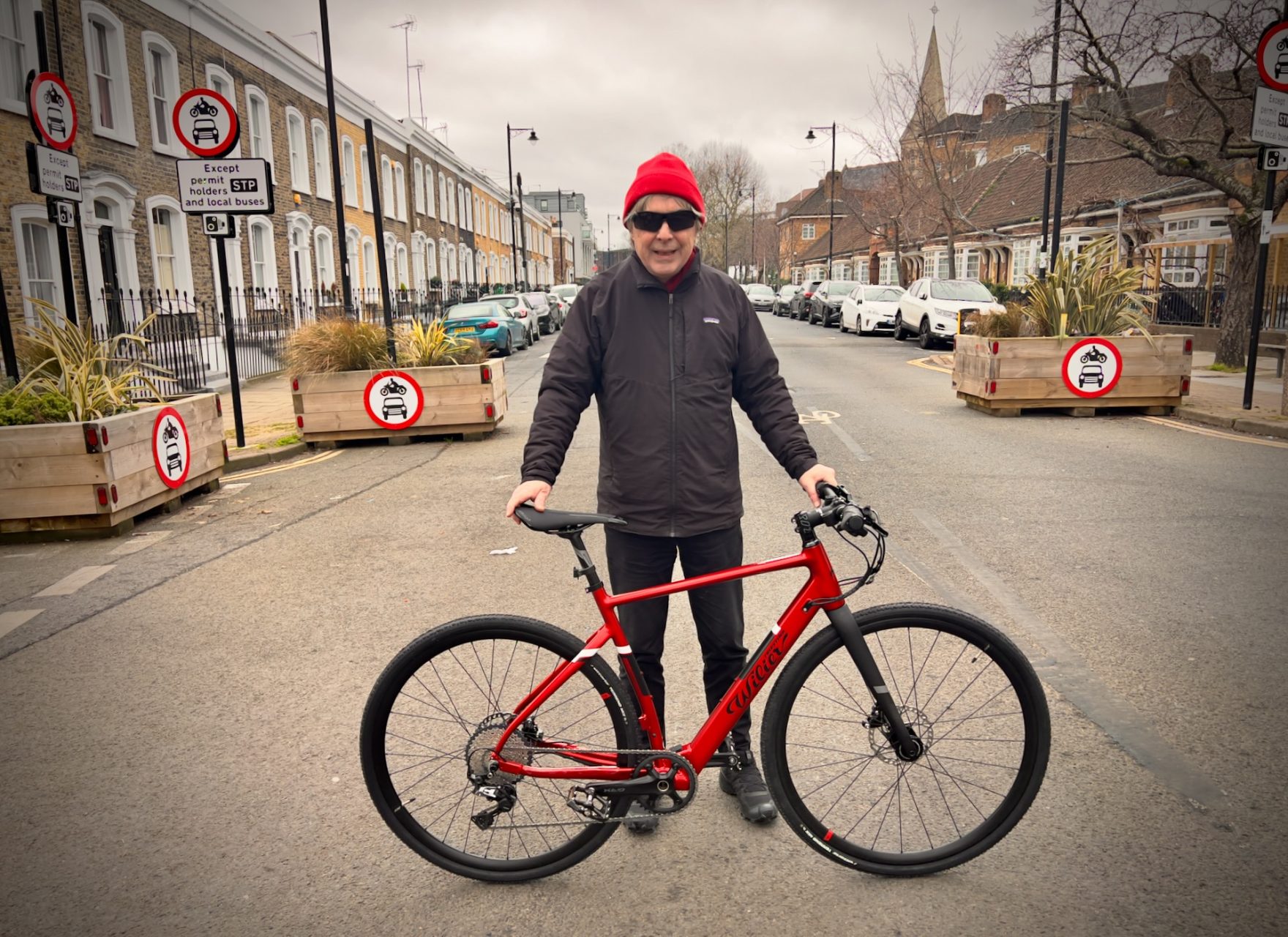
Electric bikes are now the happening category, but they can be very heavy, 25-40kg! Still lightweight versions, about 15kg do exist, but they are expensive, like the Boardman HYB 8.9E or Ribble Hybrid AL e at about £2400. Ribble even sell an electric carbon sports bike, the Endurance SL e, apparently the lightest ever, but prices start at £3300 (yes I would like one). Since I live in London I sold my car, after all who needs the hassle (closed roads, 20mph speed limit) and expense (congestion charge, parking, insurance). In addition I have a Freedom Pass for public transport anyway, so I just stopped using the car. In town a bike is the fastest way to travel, especially if you include parking time. Hence I bought a Wilier Triestina Hybrid GRX E-bike 2022 in a sale and it has been marvellous, weighing only 14kg. A large size one is still available at Merlin, 41% off, for just £2000. The cheapest good electric bike I have seen, but not ridden, is the estarli e28.8 retailing at £1625 and weighing 16.5kg. These bikes have internal batteries so they do not even look electric, and the power is applied very smoothly to the rear wheel. The law in this country means you have to pedal to power the bike and the assistance only goes up to 15.5 mph, but that is fine. There are now some good electric bike conversion kits like Boost or Swytch costing around £600. One thing to note is that you need fewer gears on an electric bike.
As for security, yes it is a nightmare. I currently use an Abus city chain motorbike lock weighing over 2kg when out at night, since I have had so many locked-up bikes stolen. In addition I have a Knog Scout attached which functions as an alarm and has a Find my Bike function like an Apple AirTag. There are also some Chinese rear lights on Amazon which can function as very loud movement alarms, £20-£30. Hope that info helps, but remember bike thieves use spotters and very powerful electric saws, it’s only a matter of time if they fancy your bike…so keep it inside.